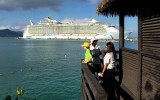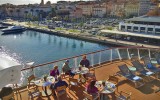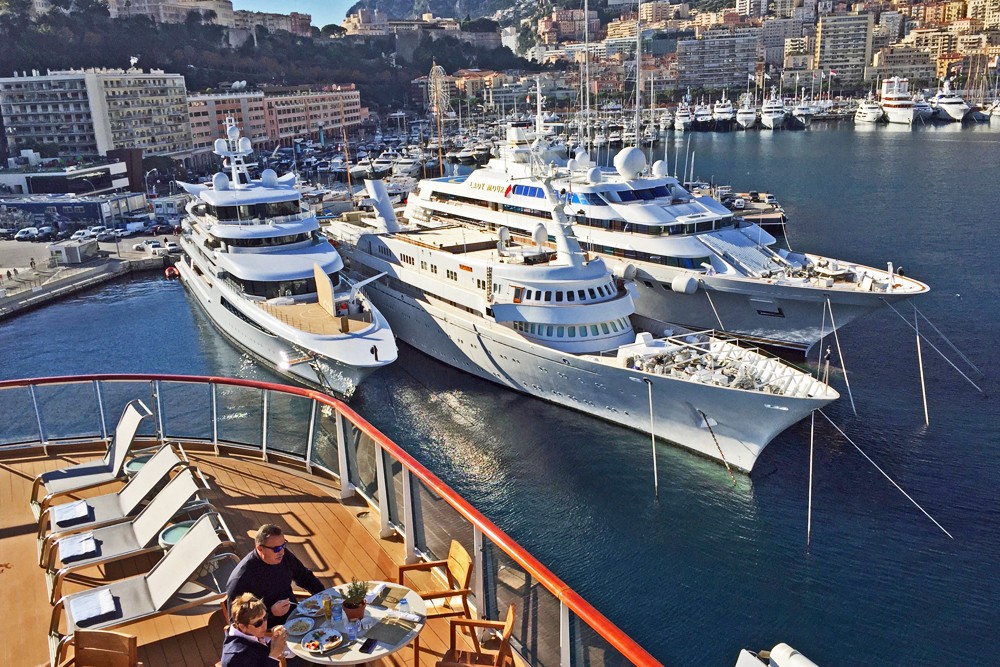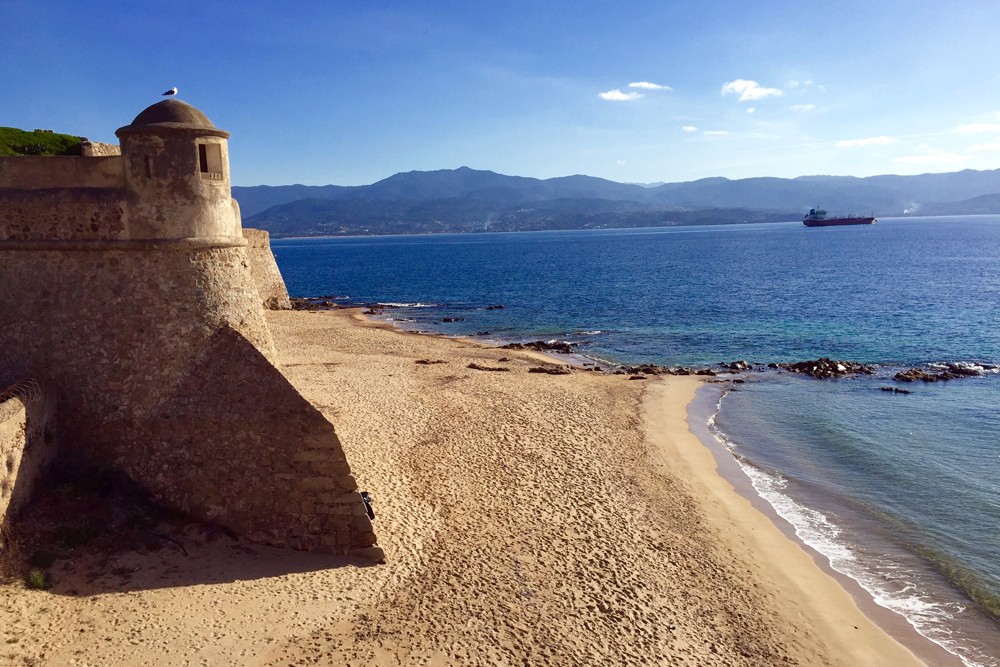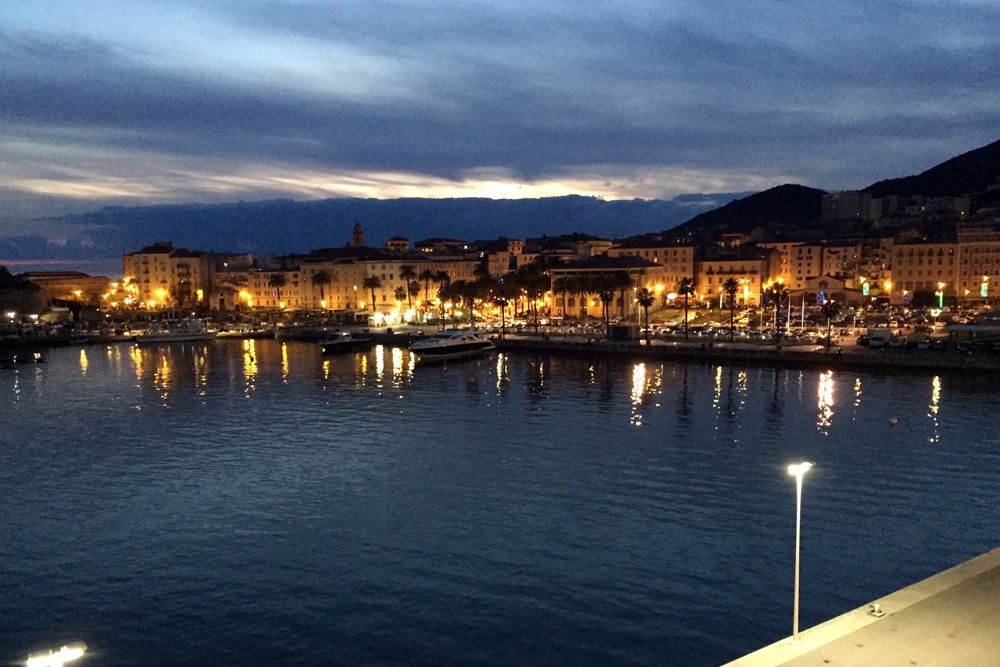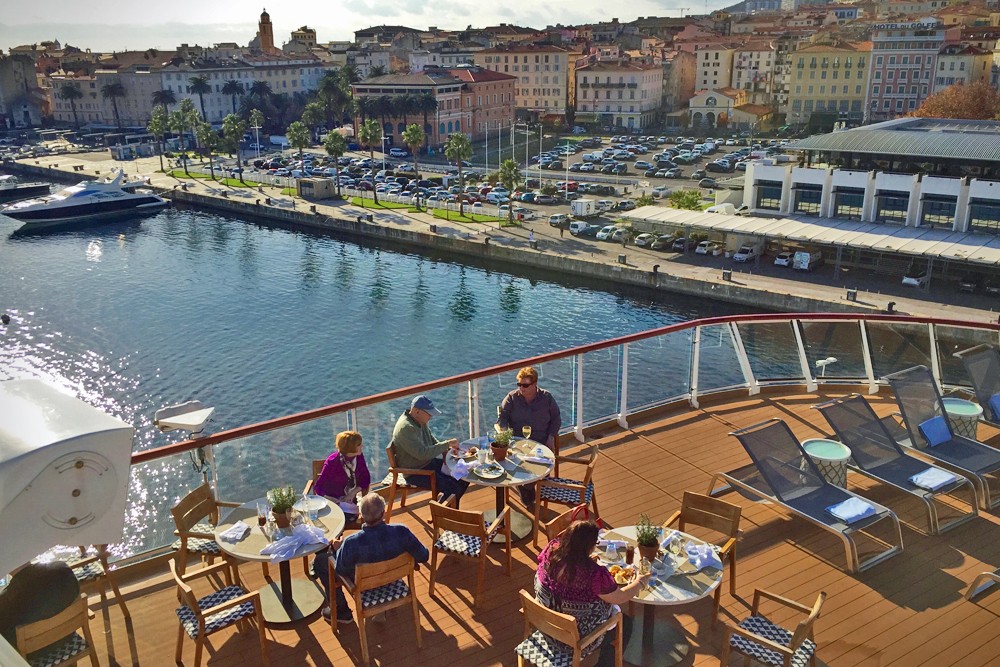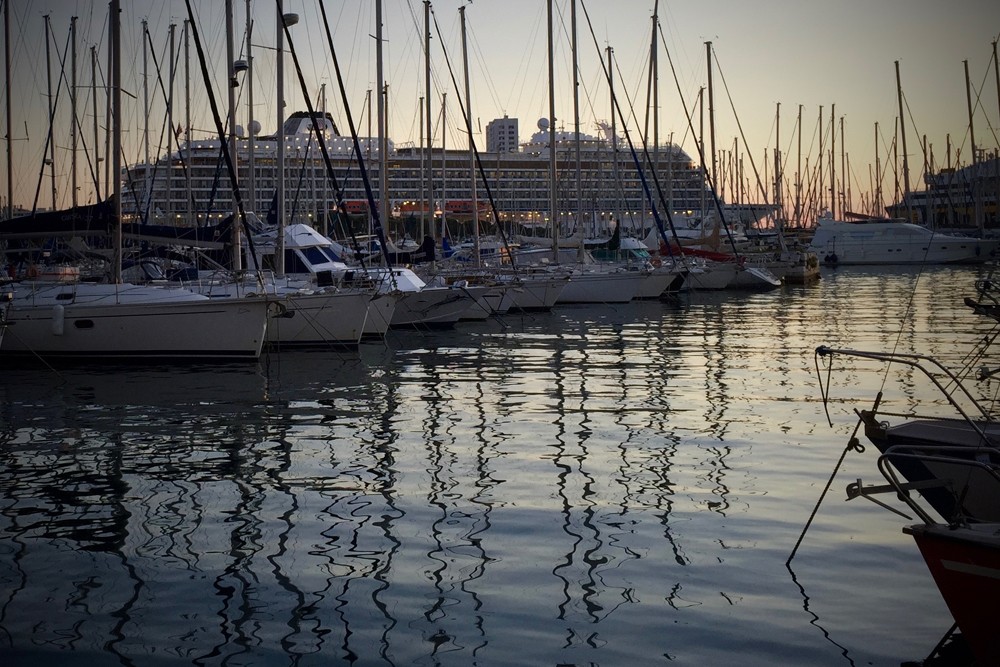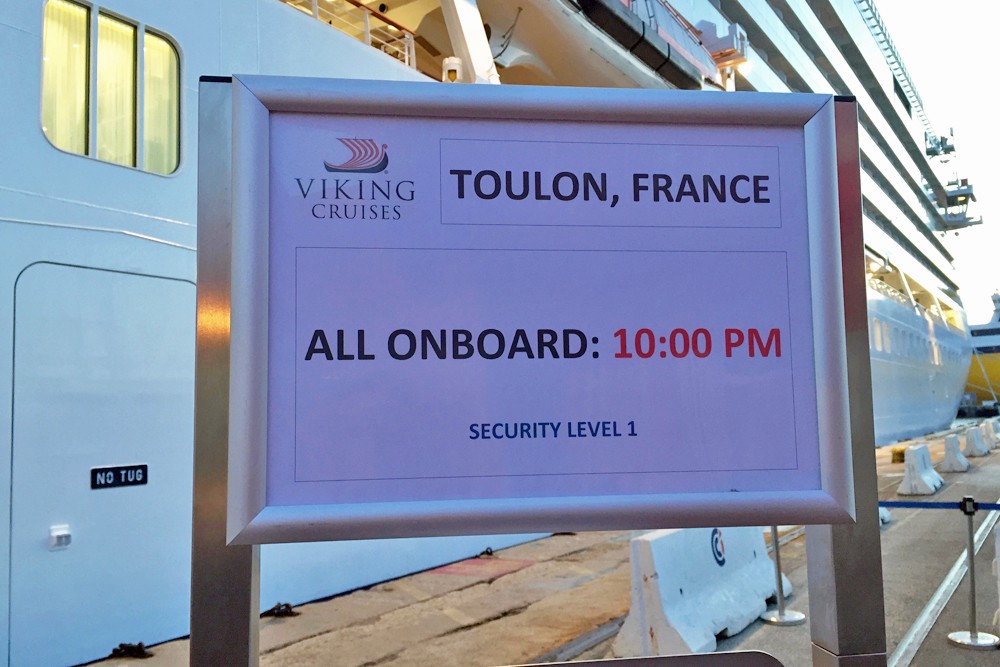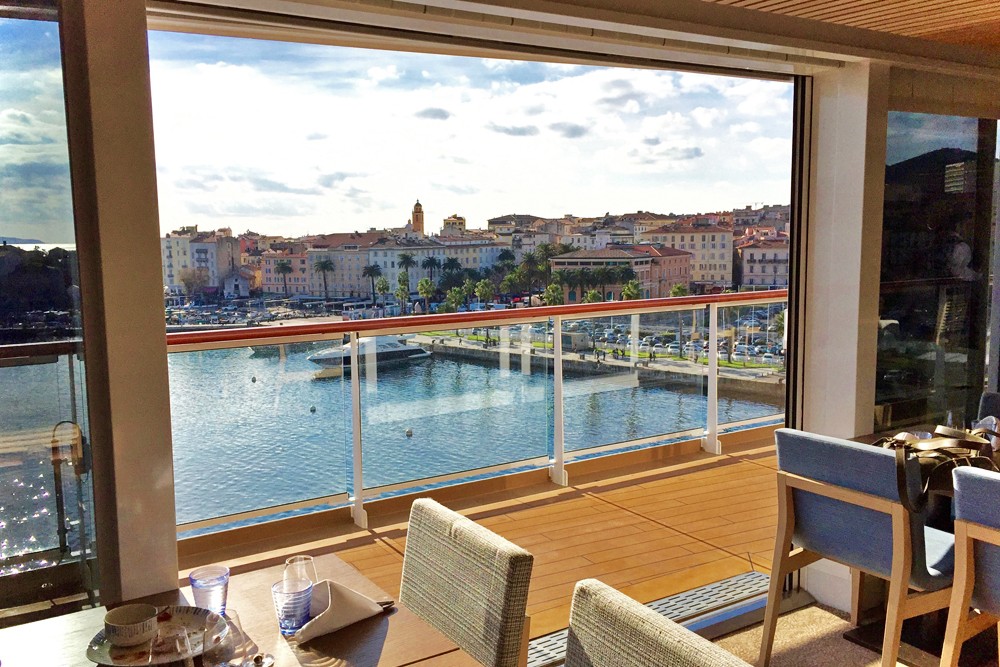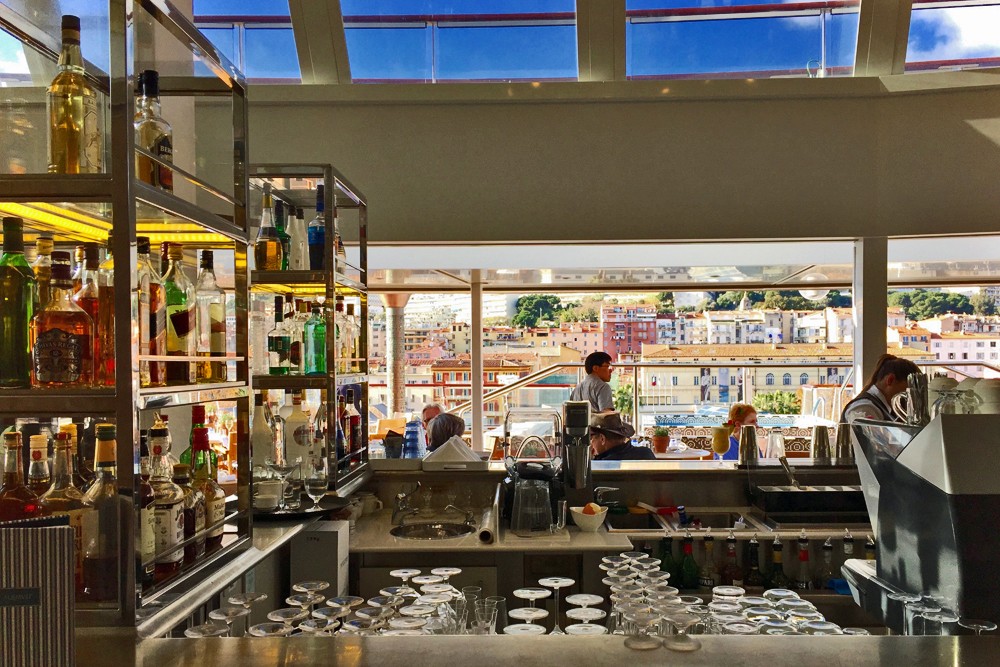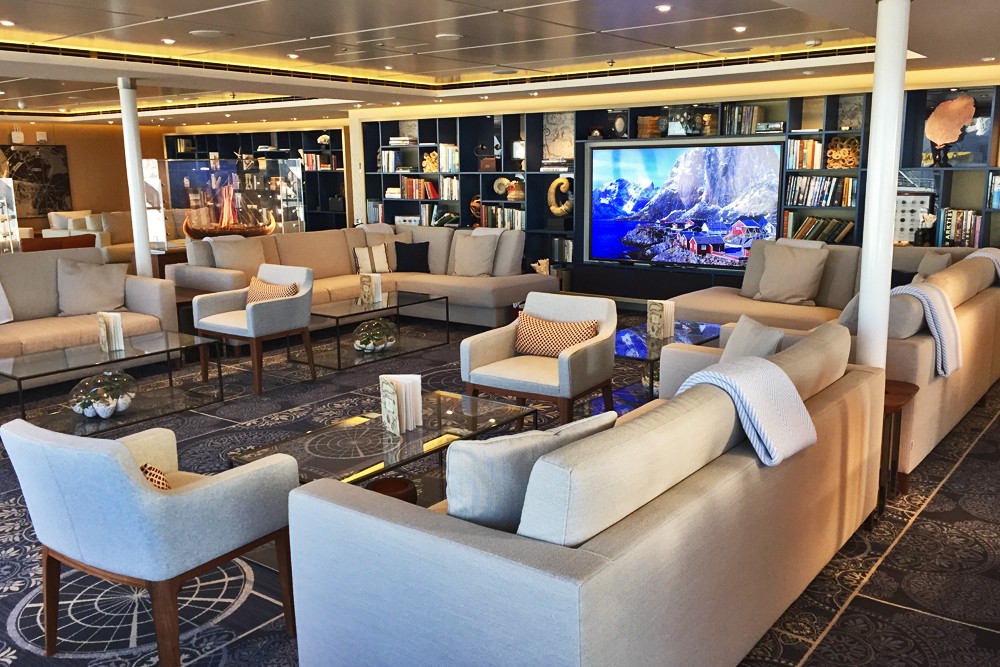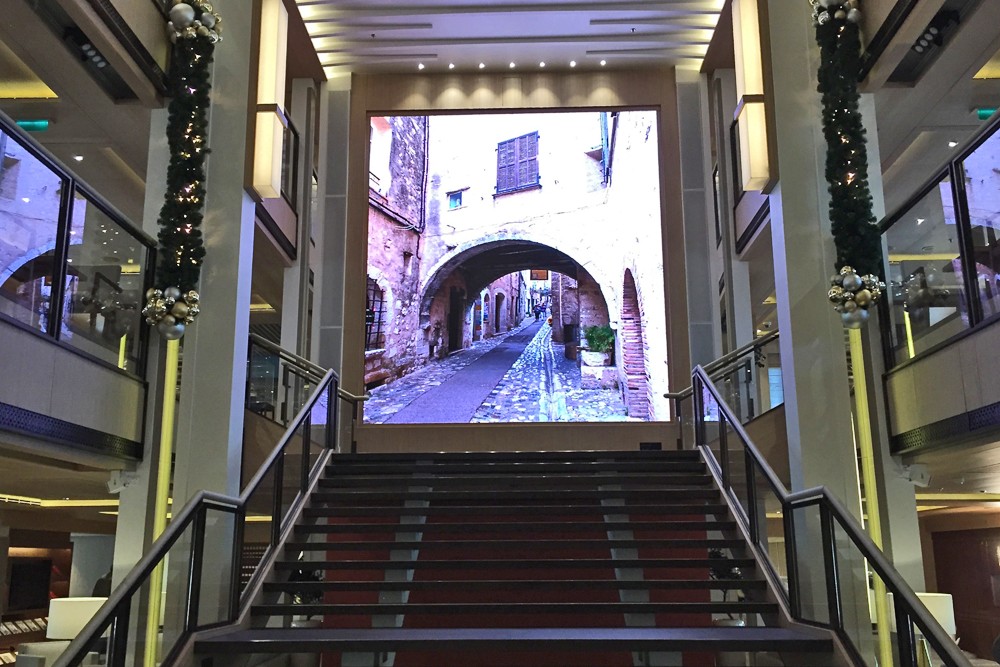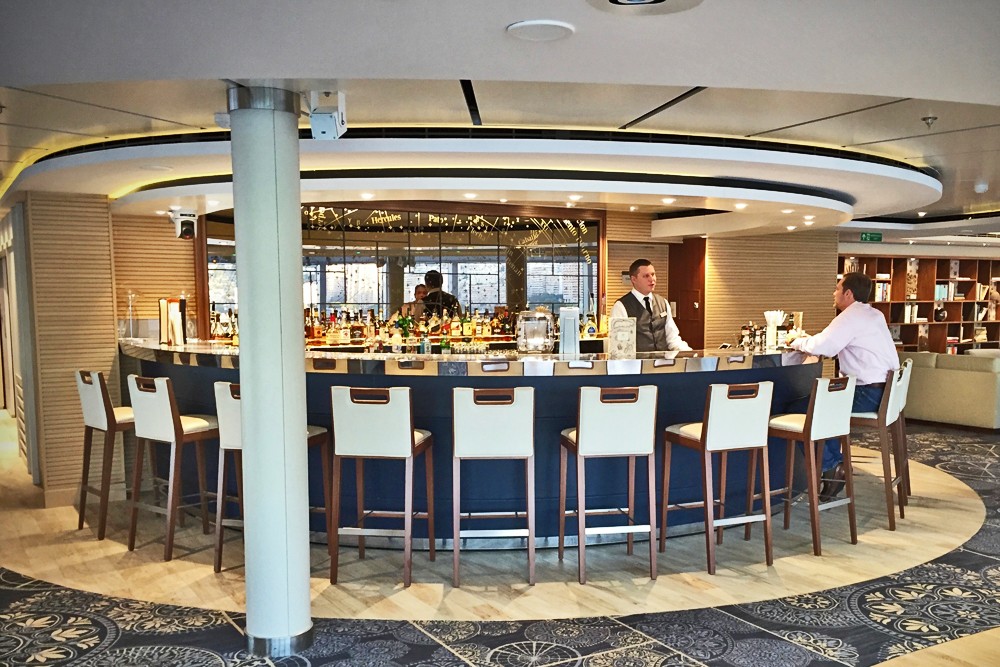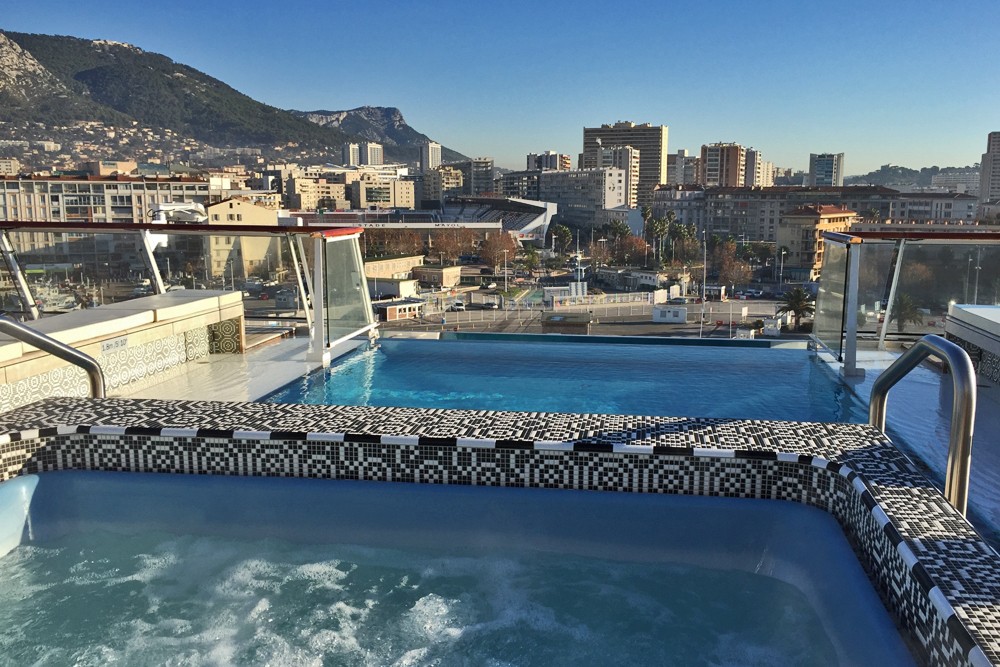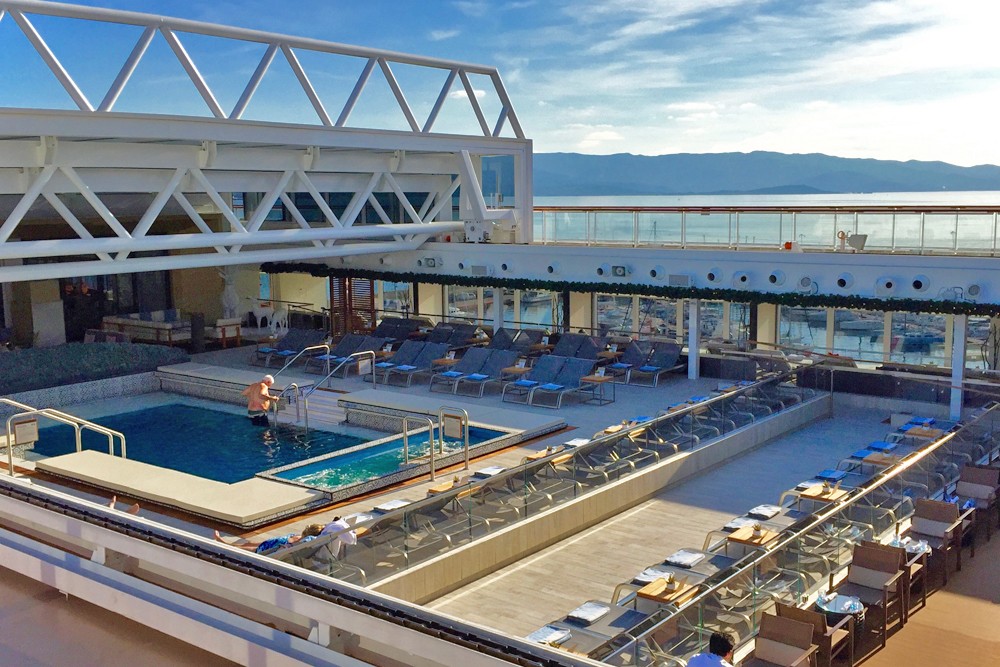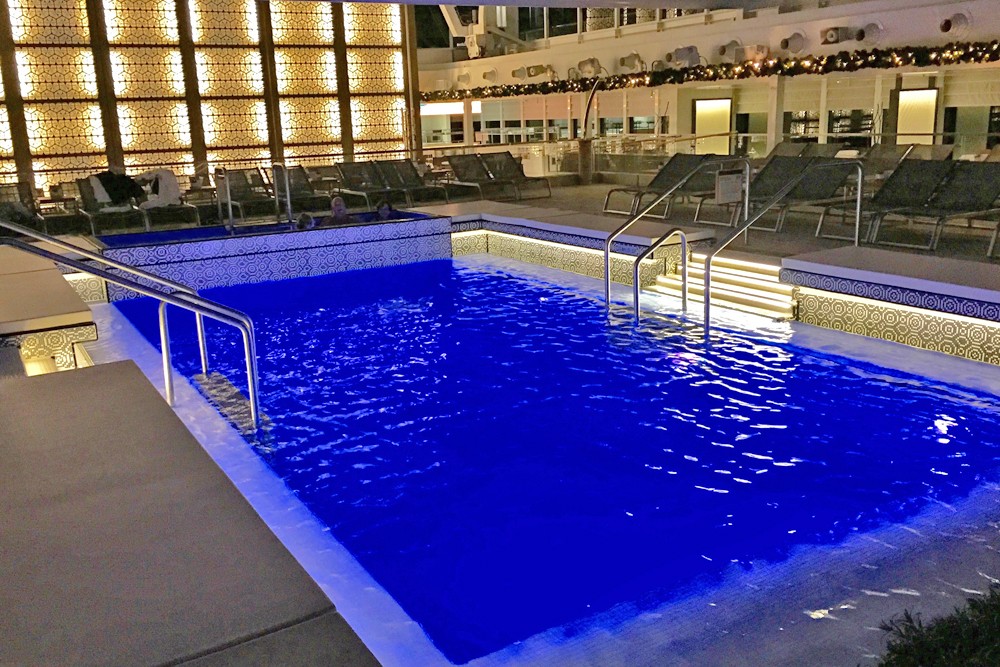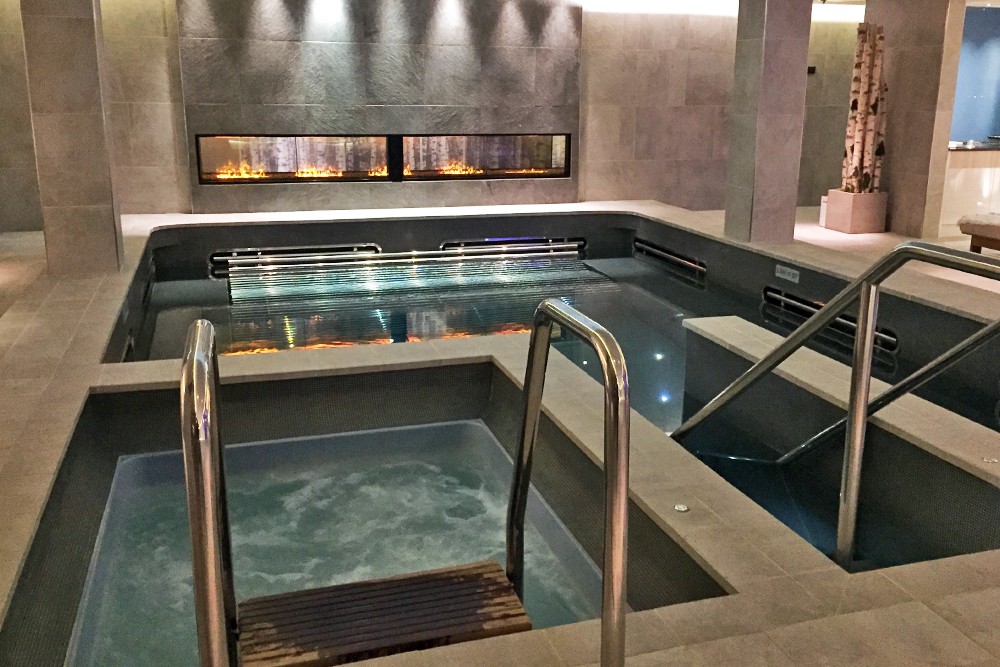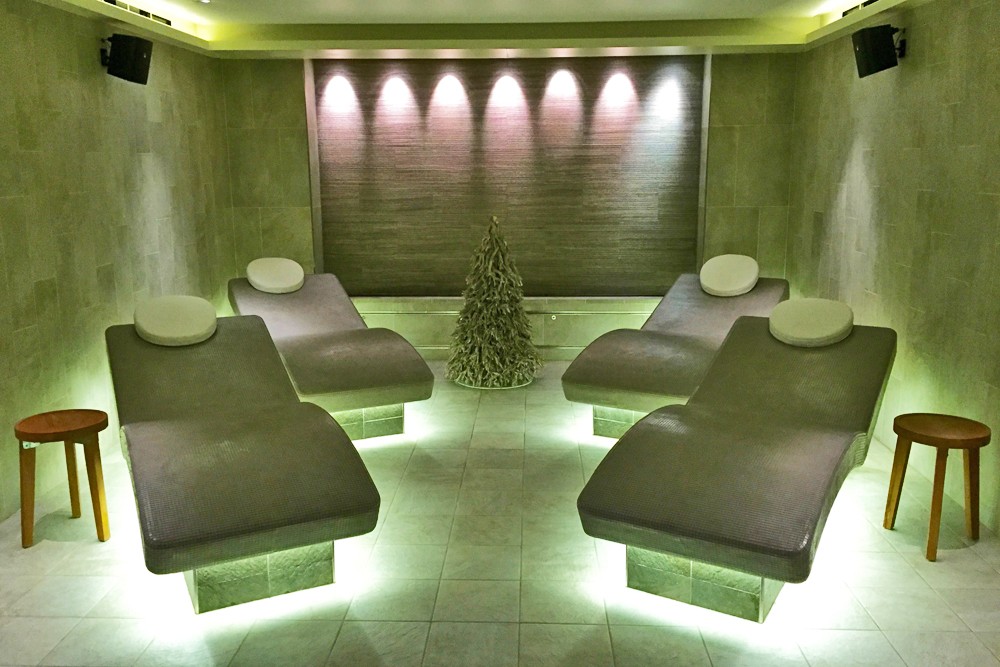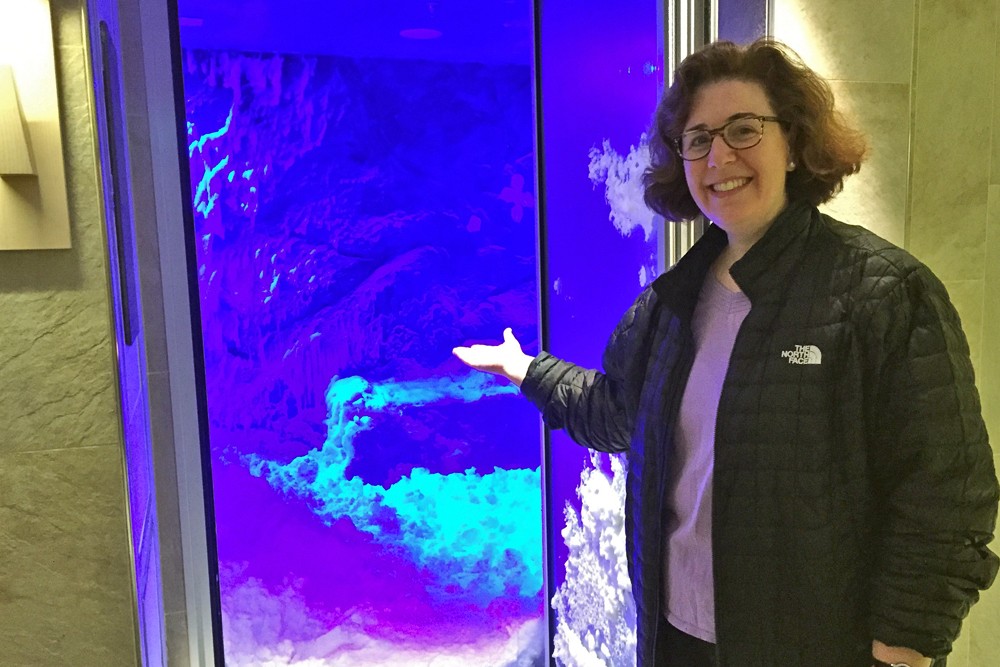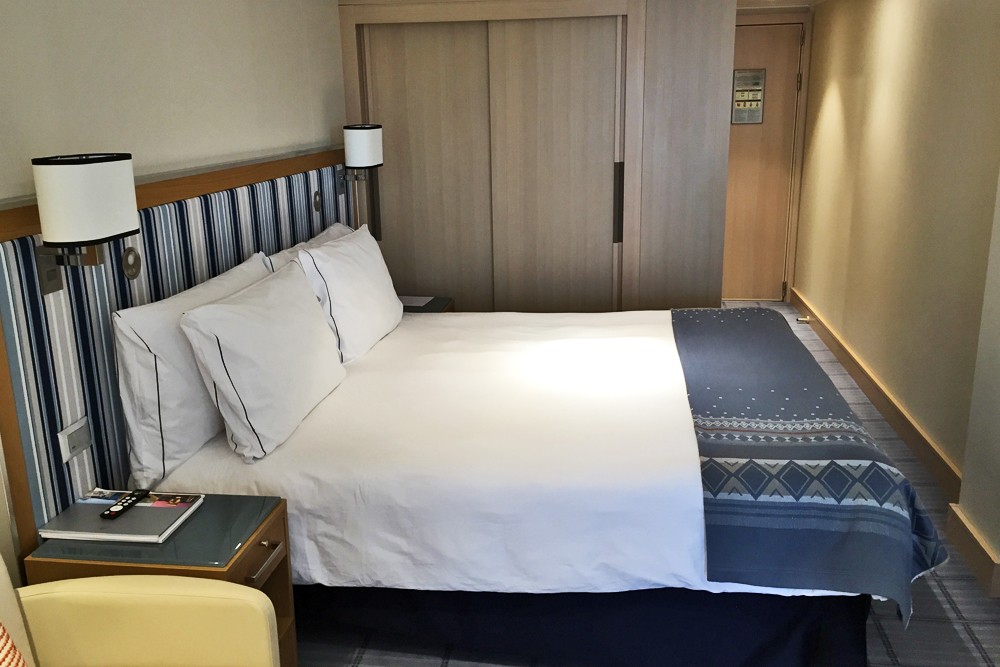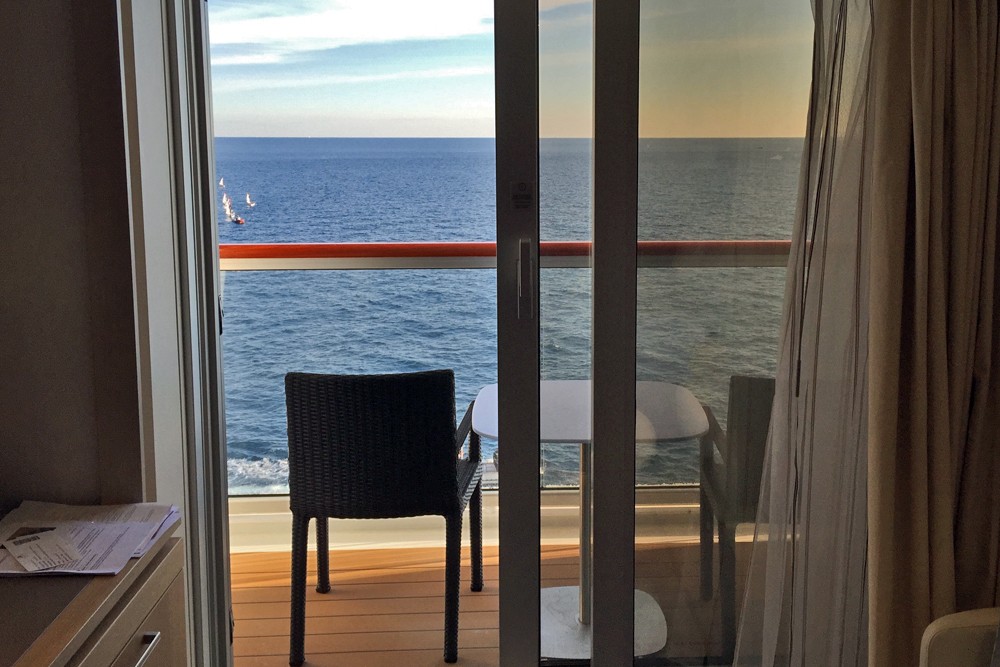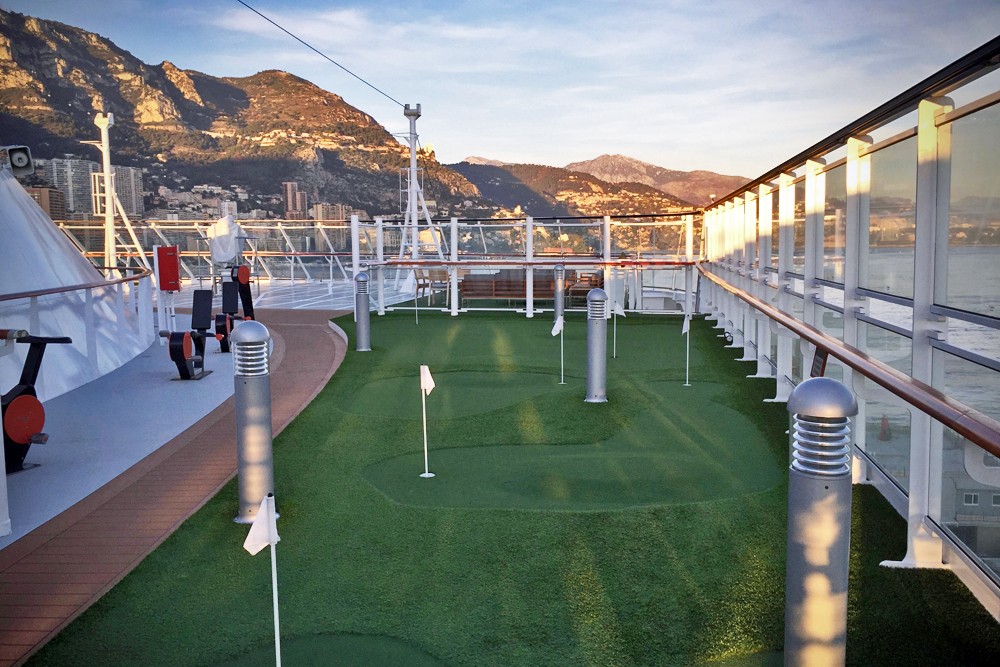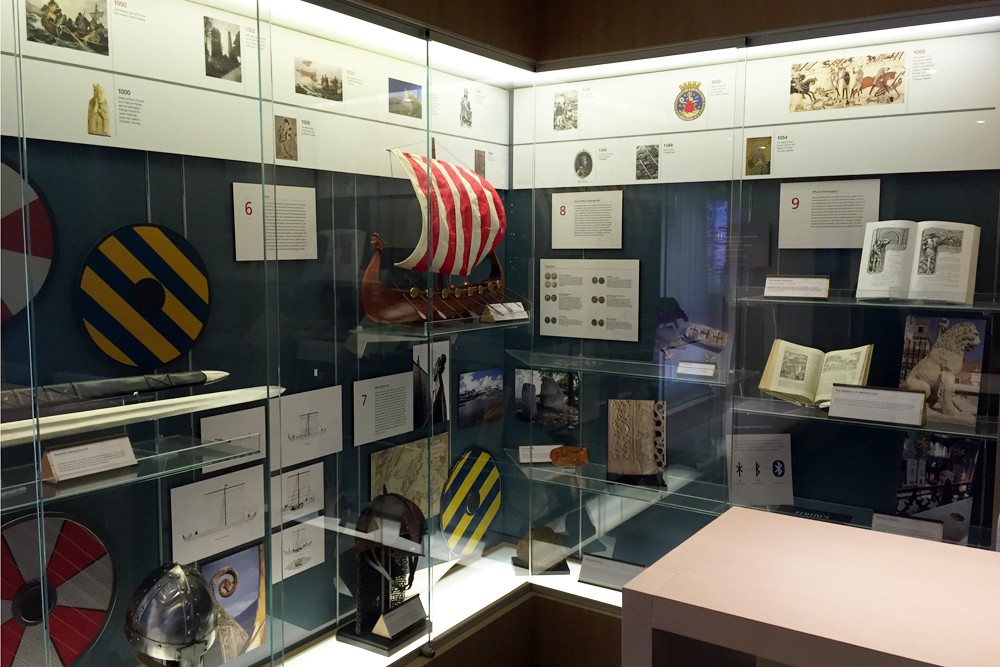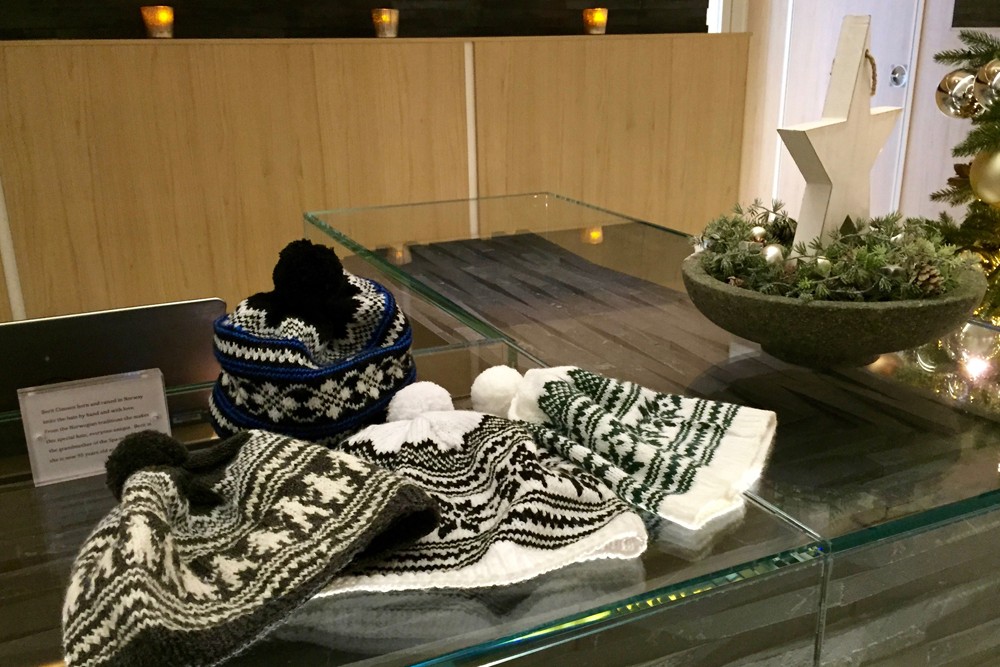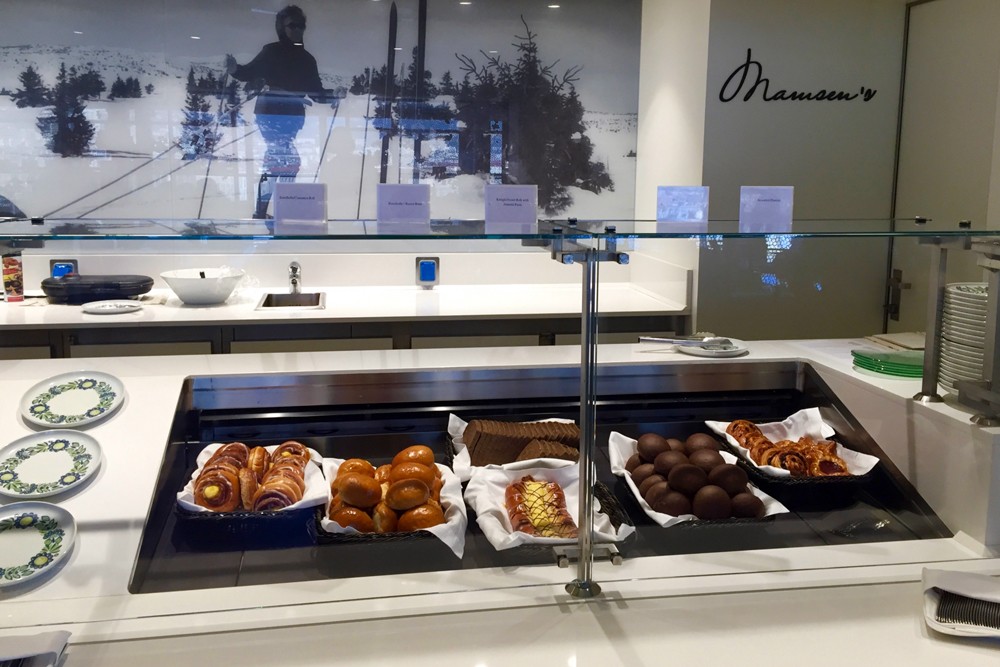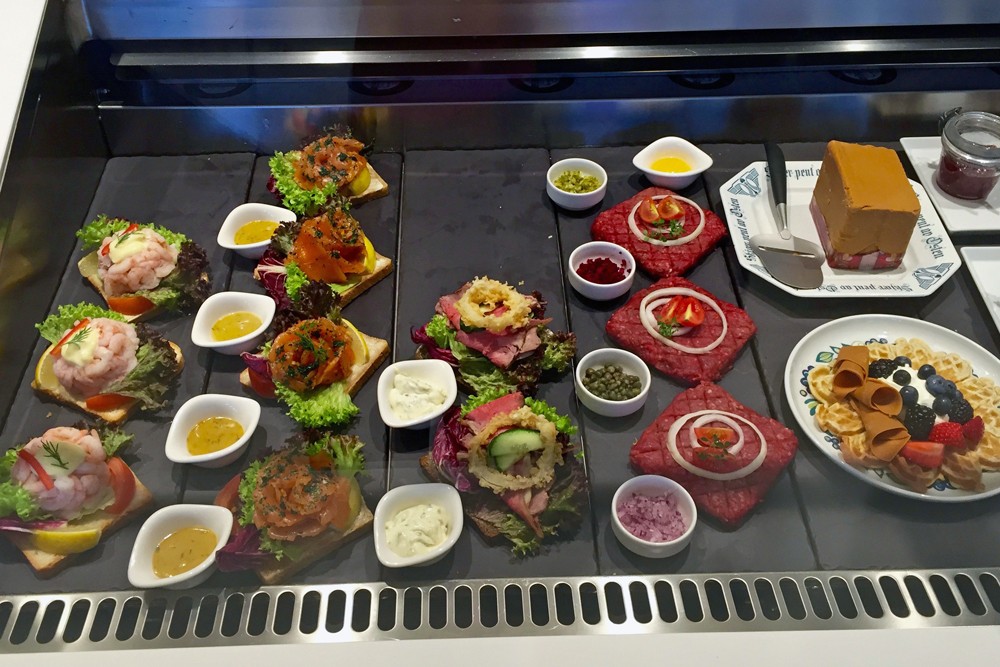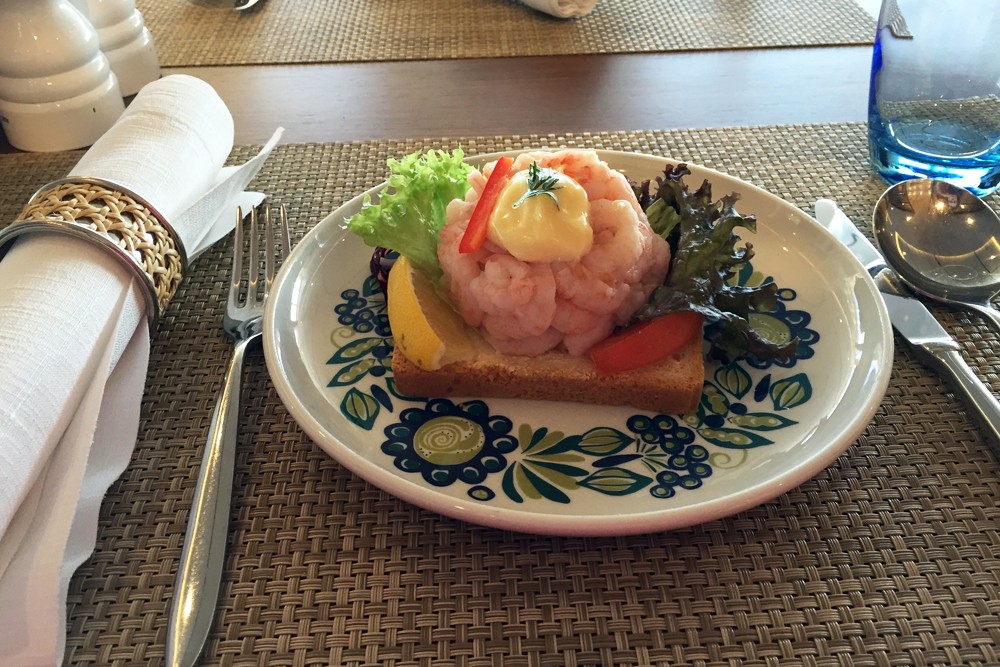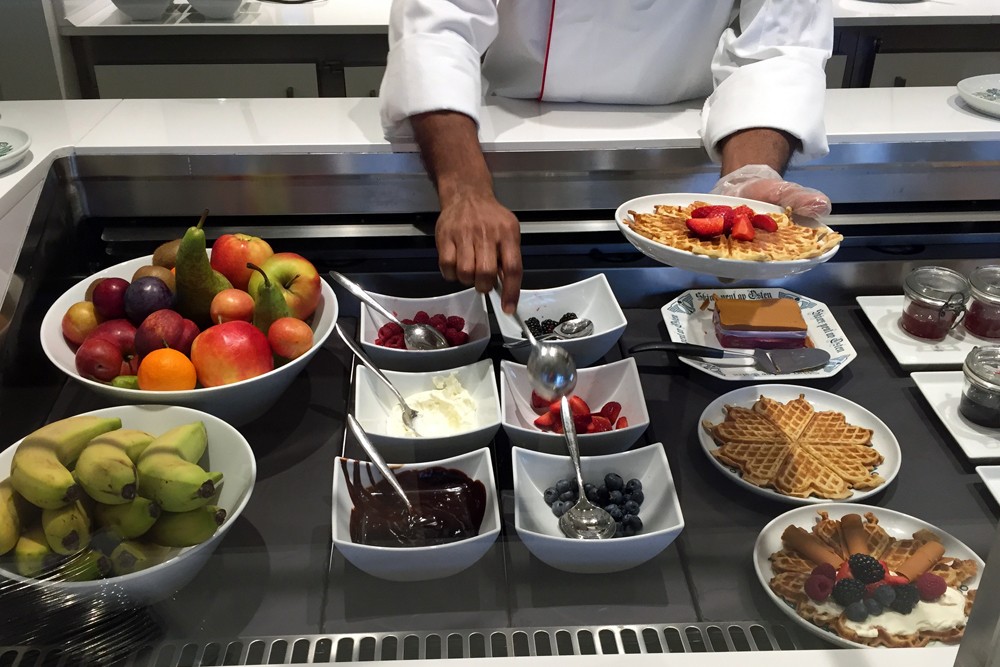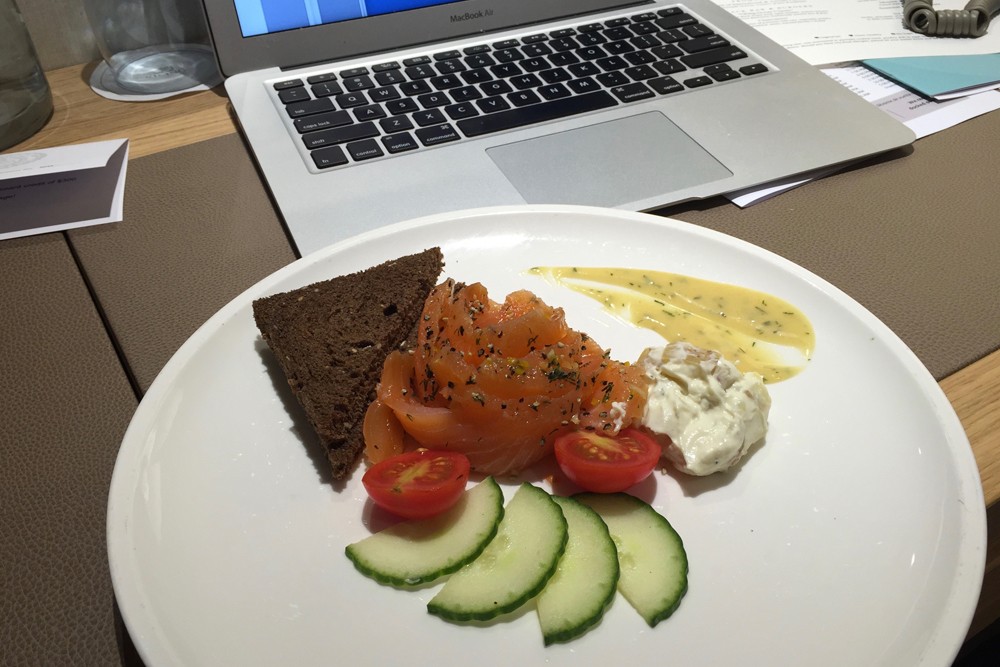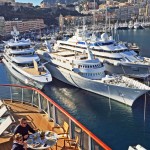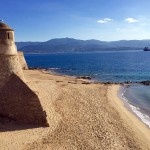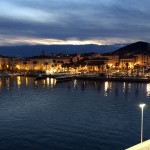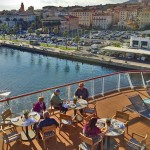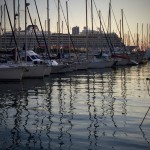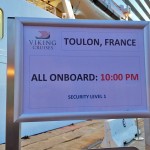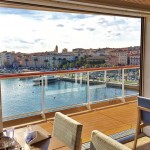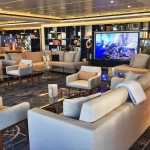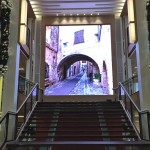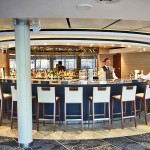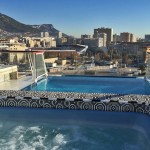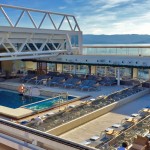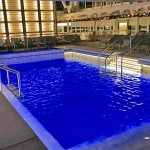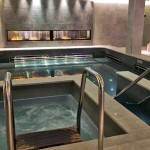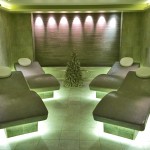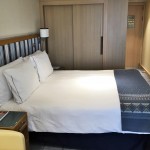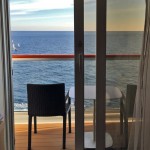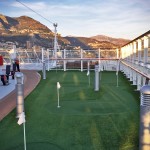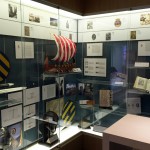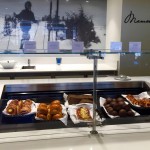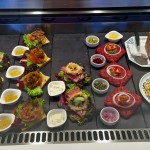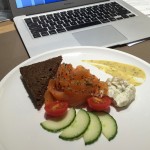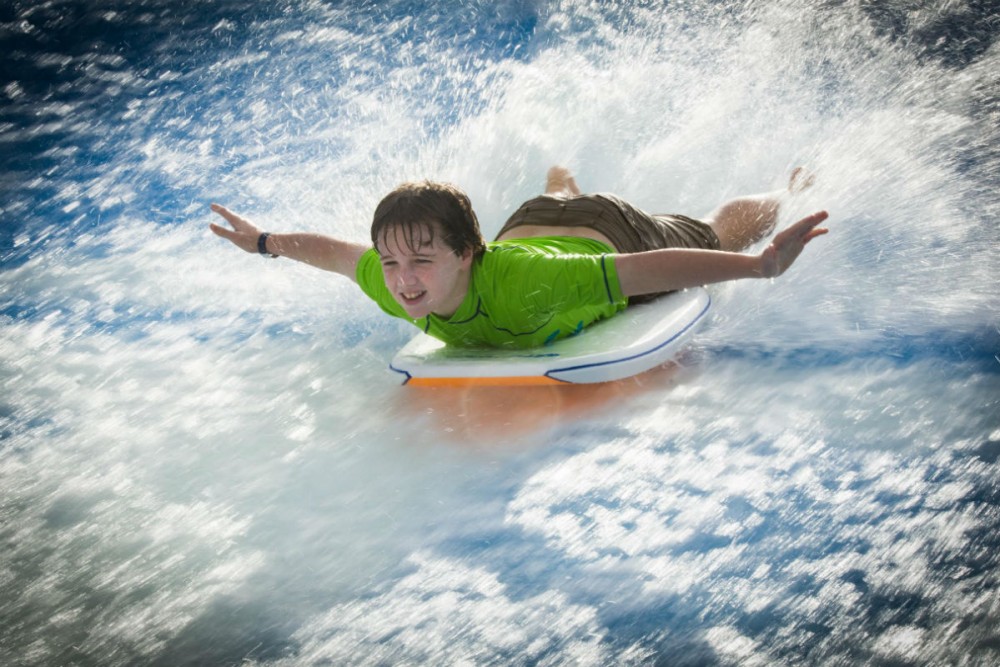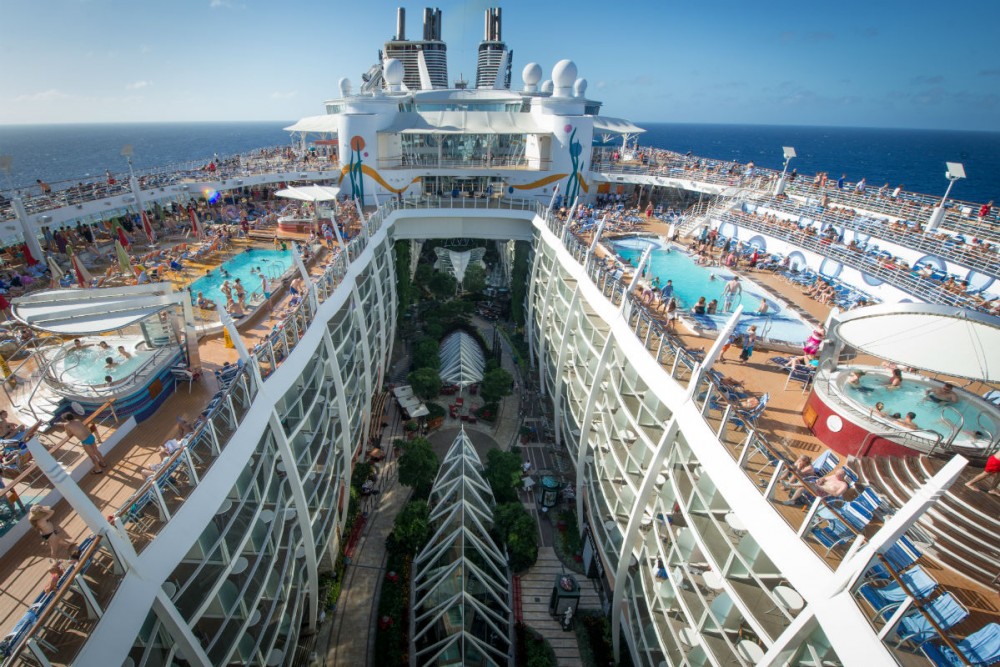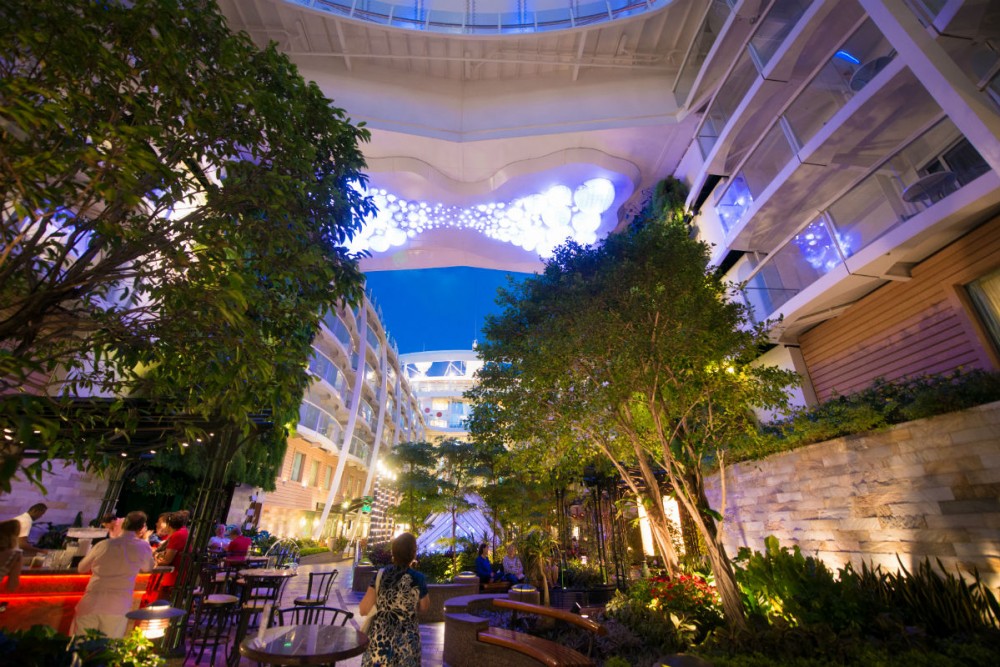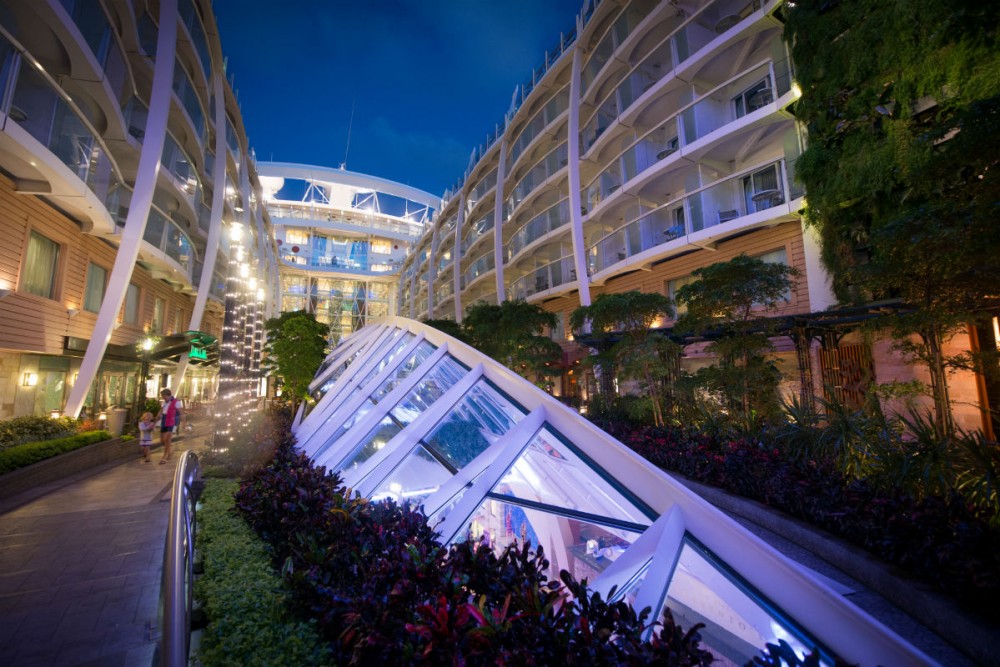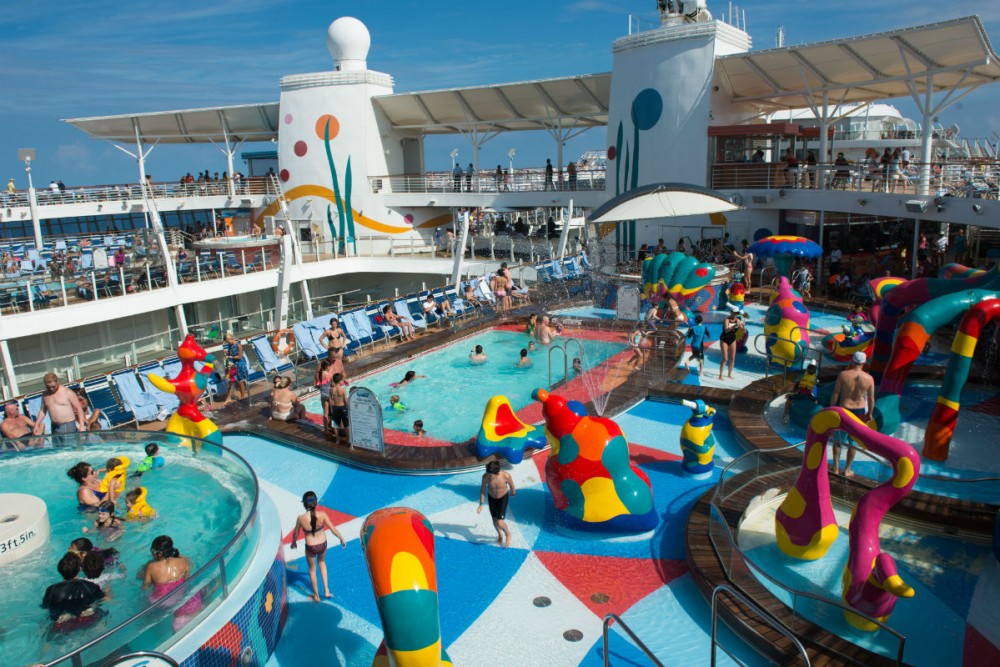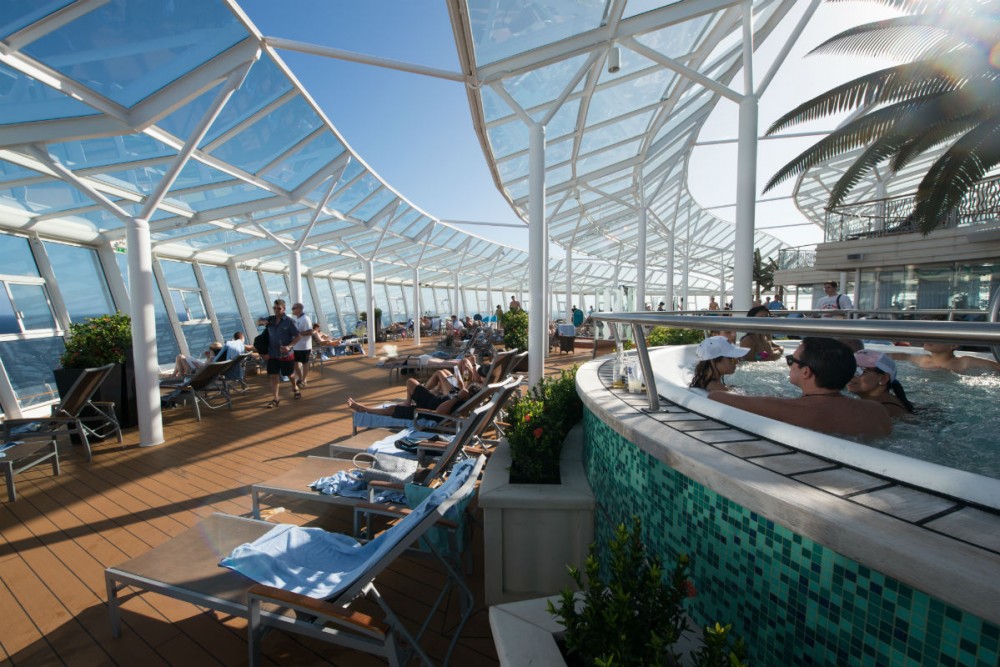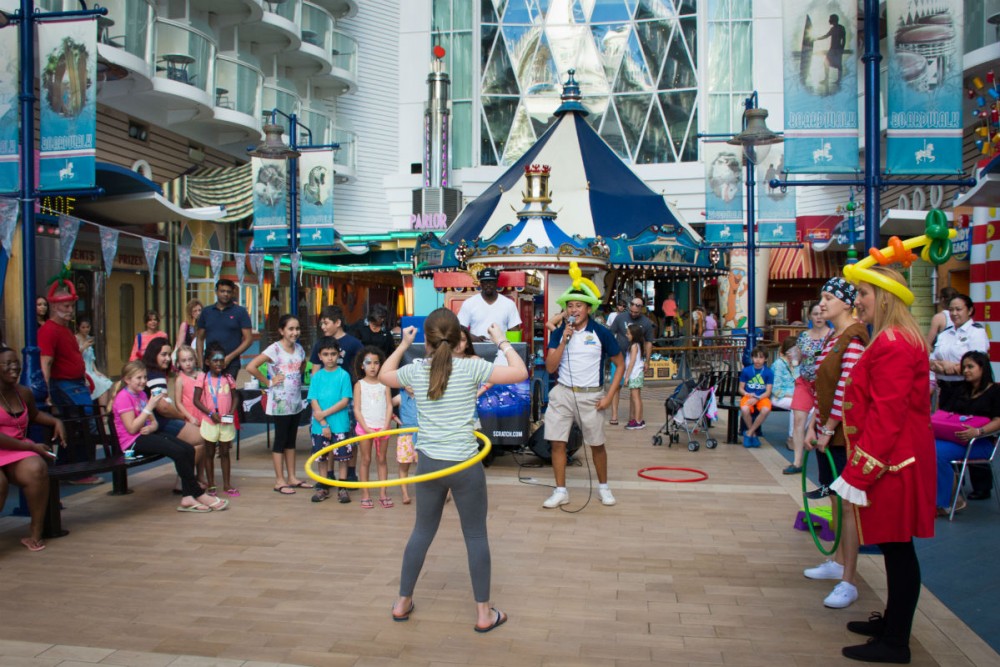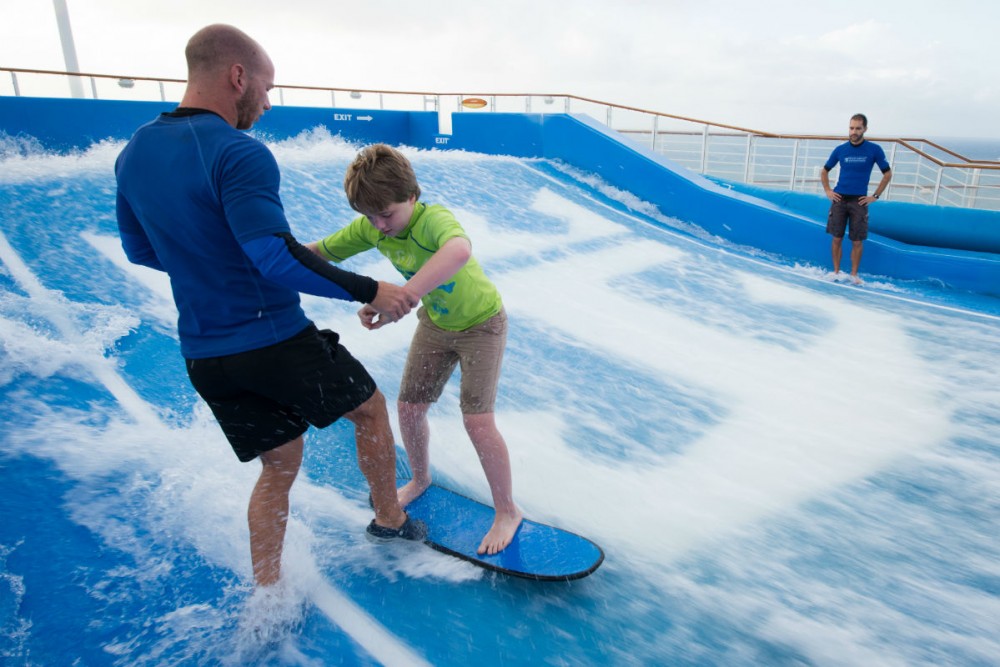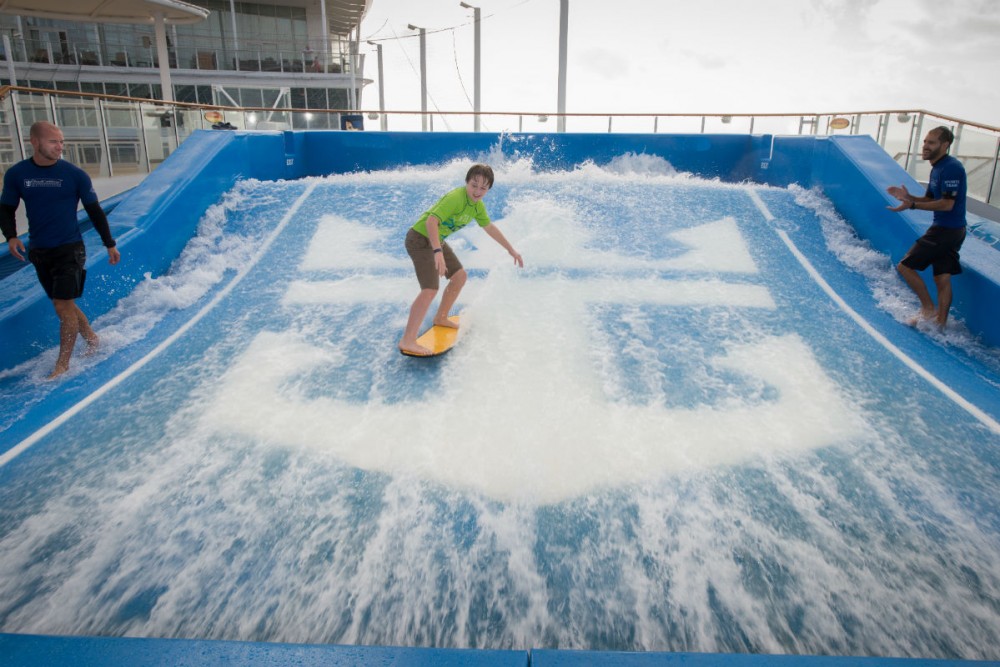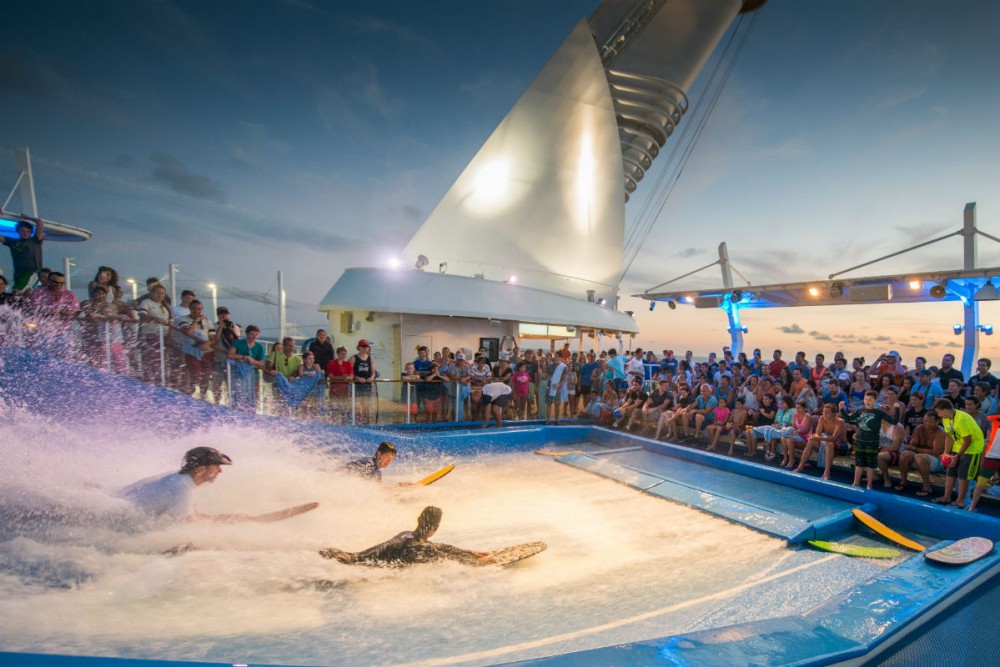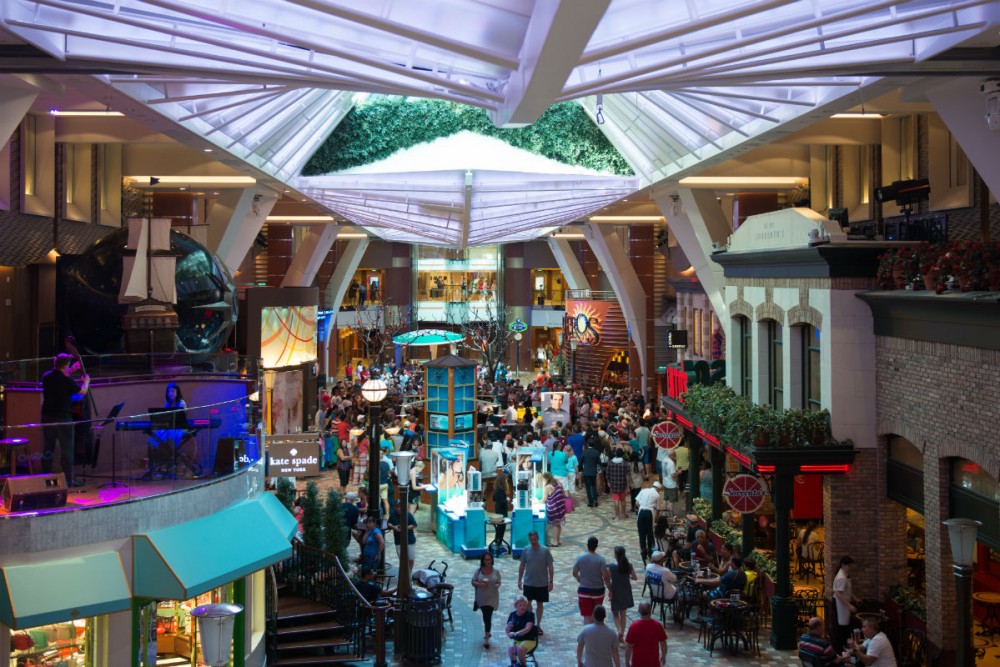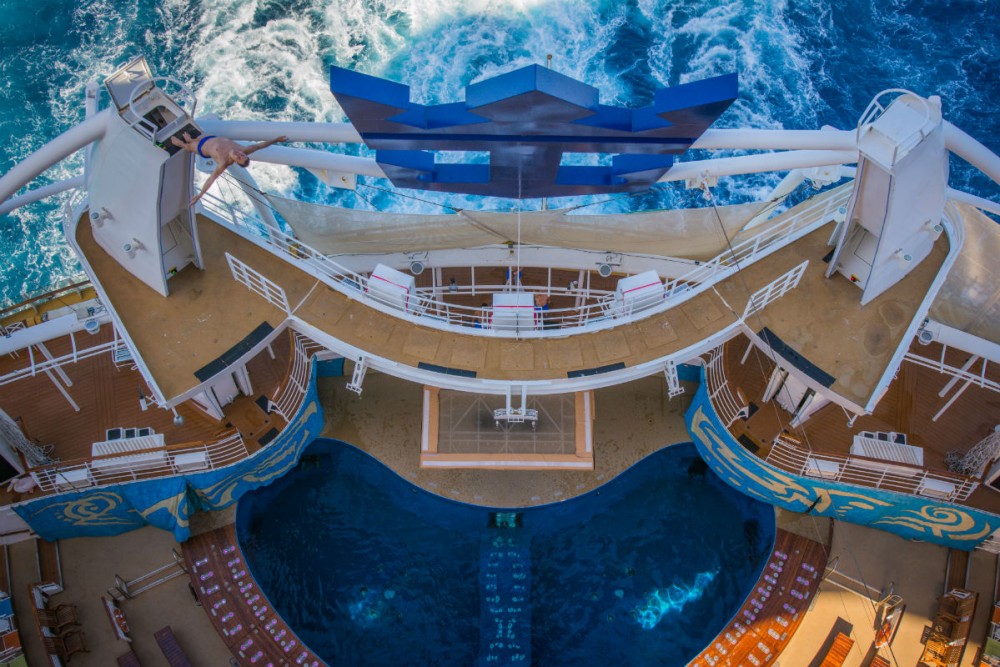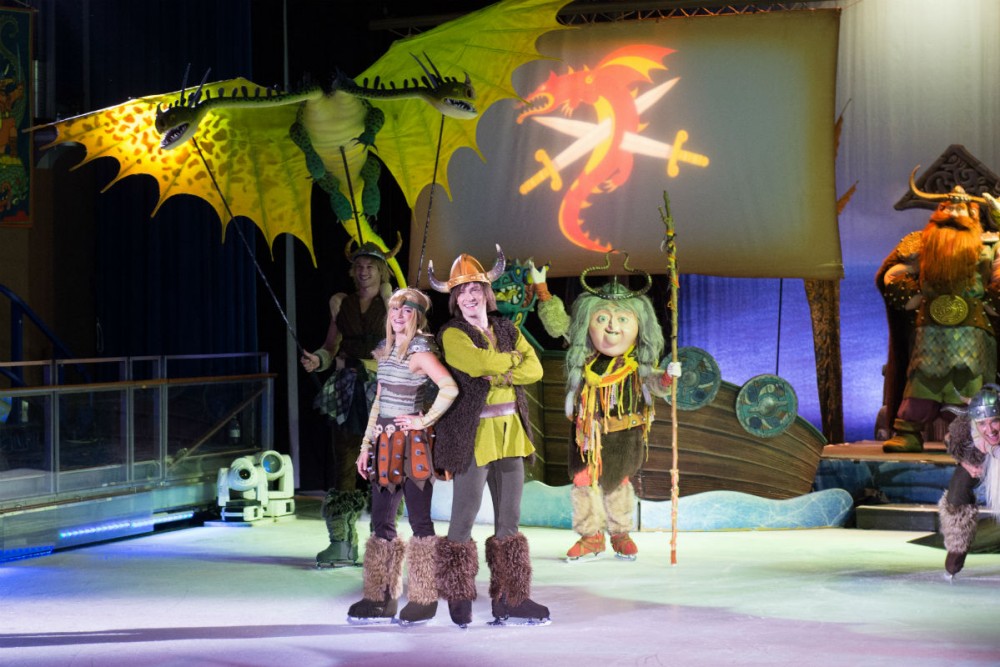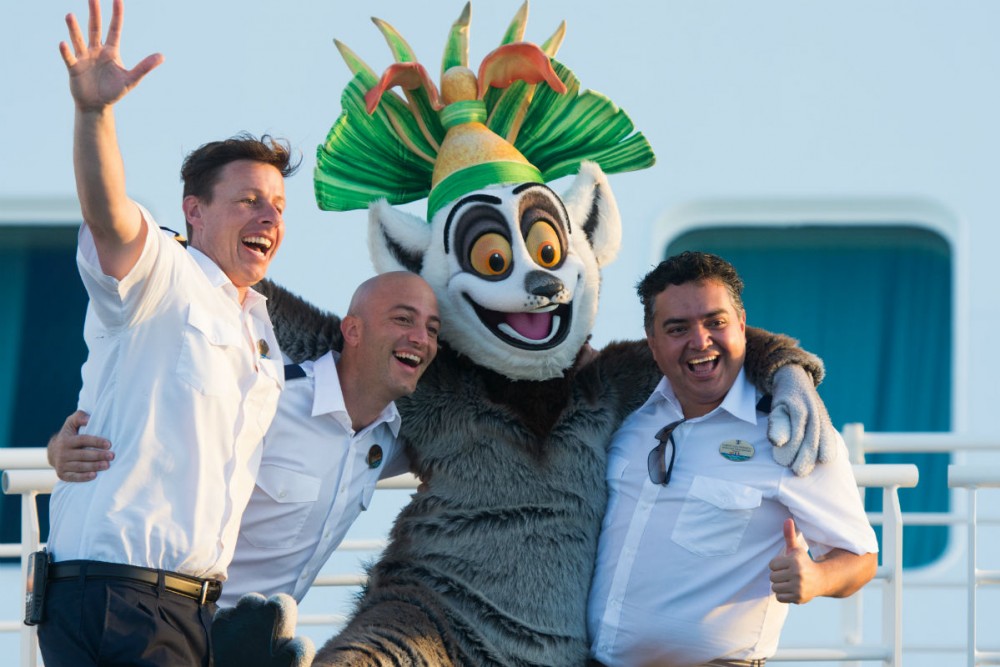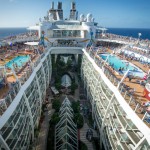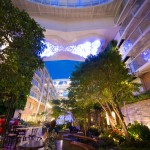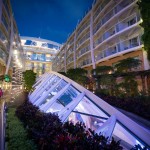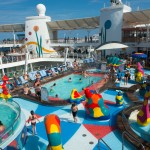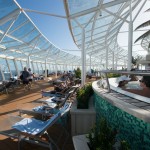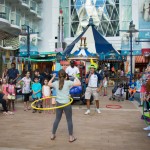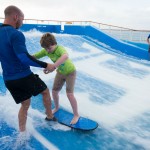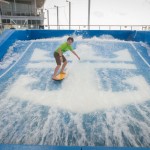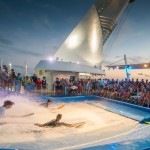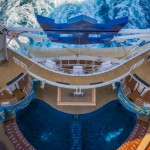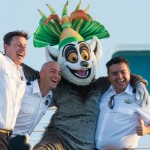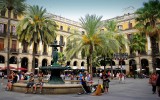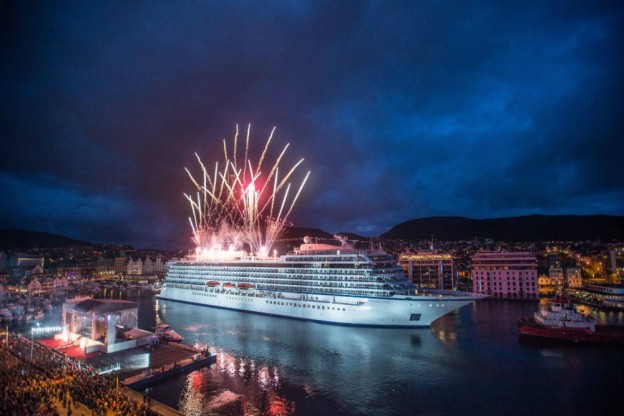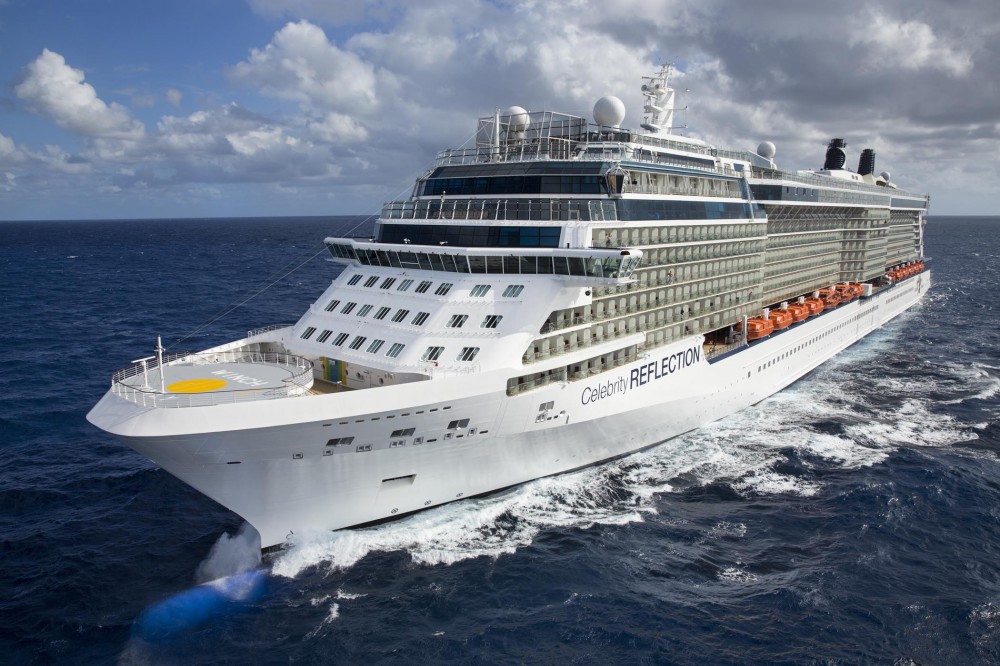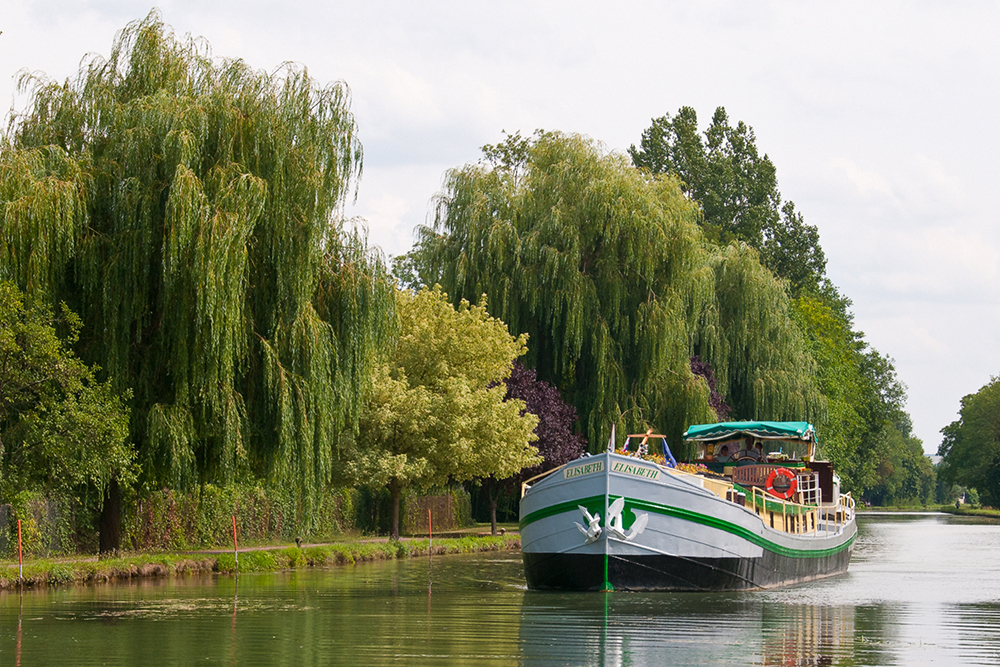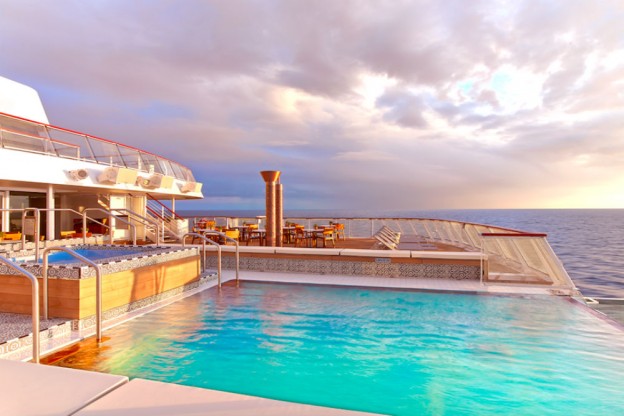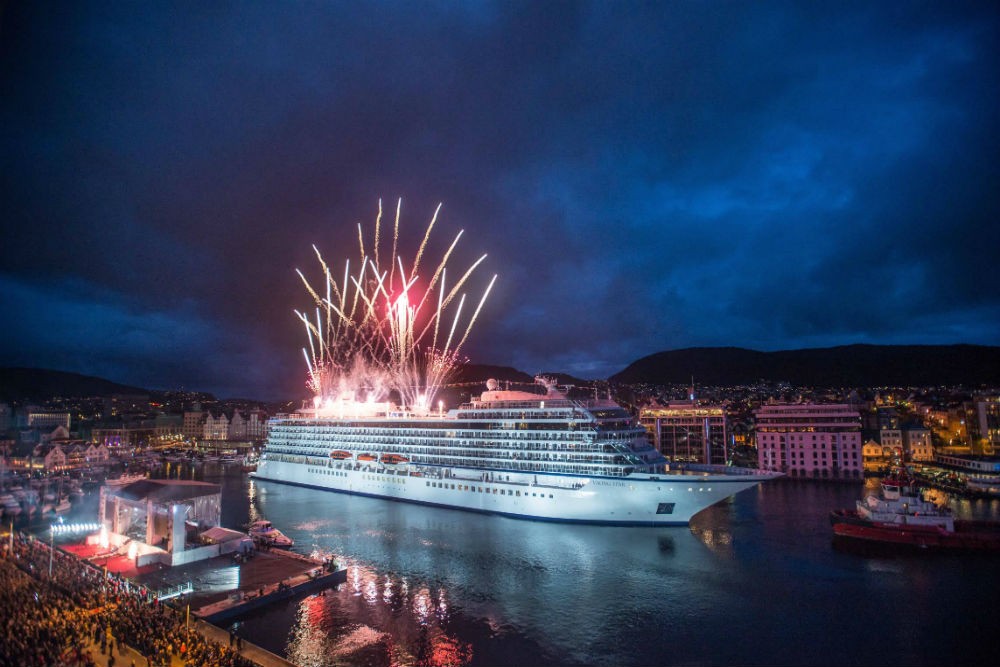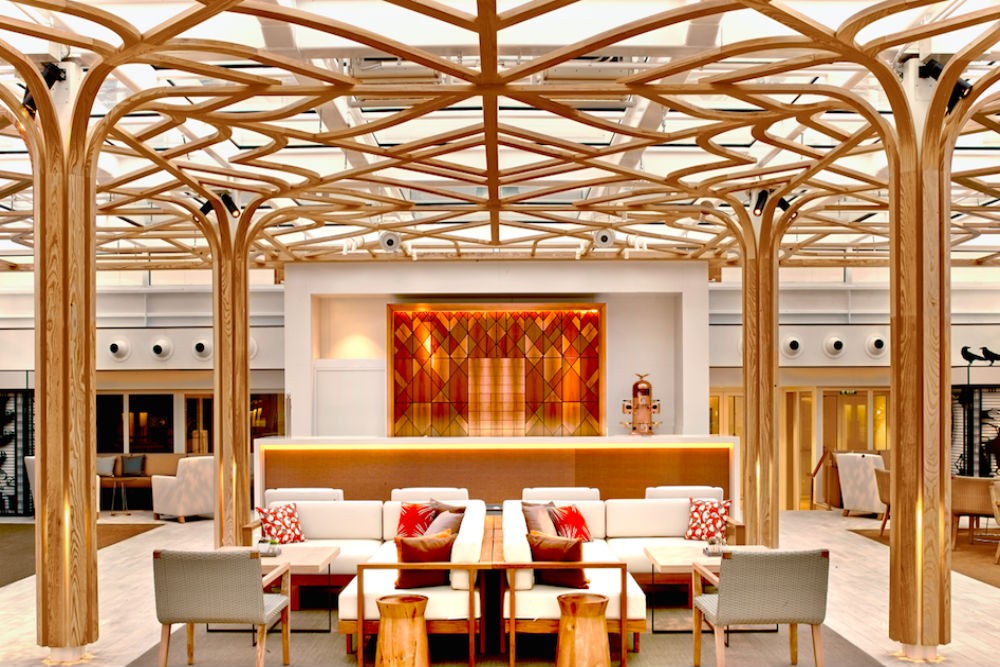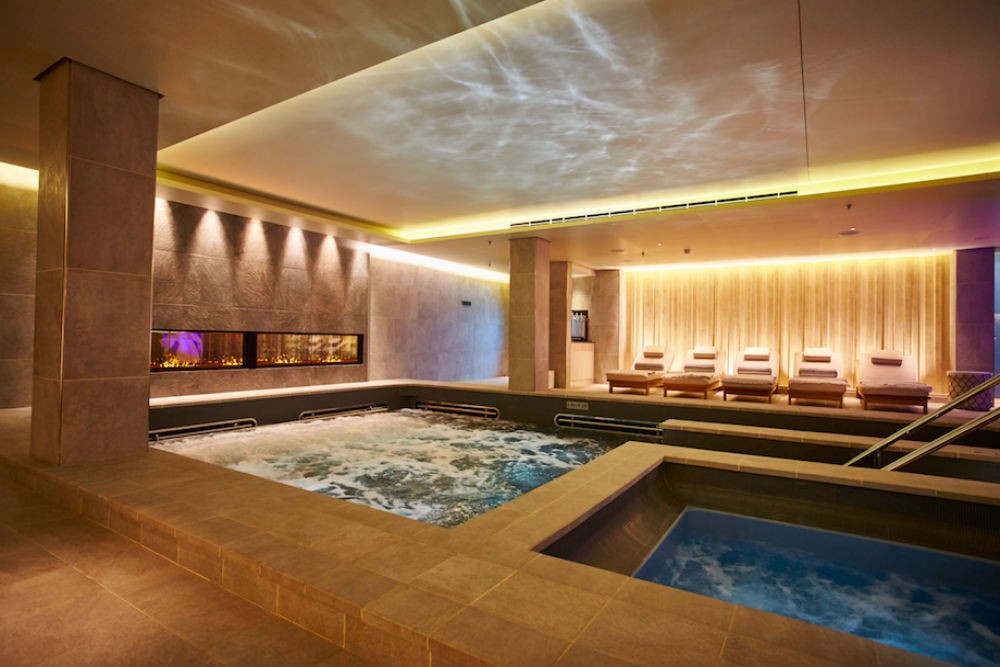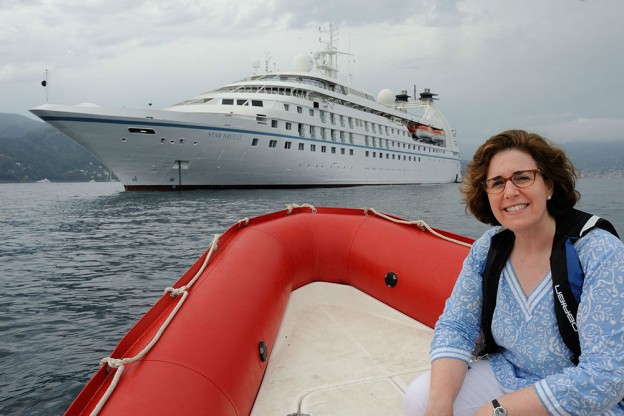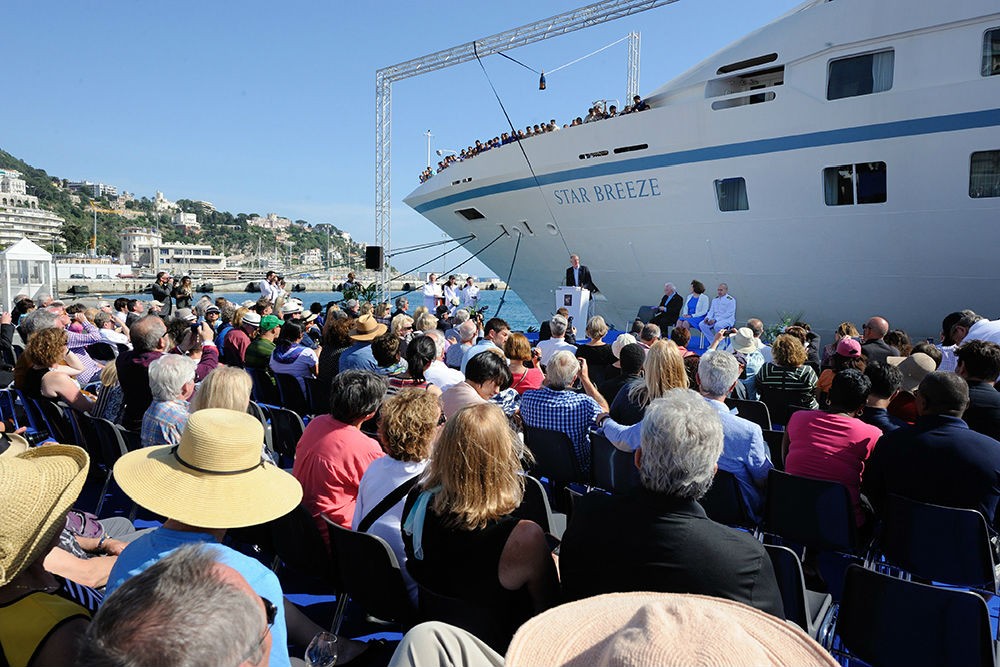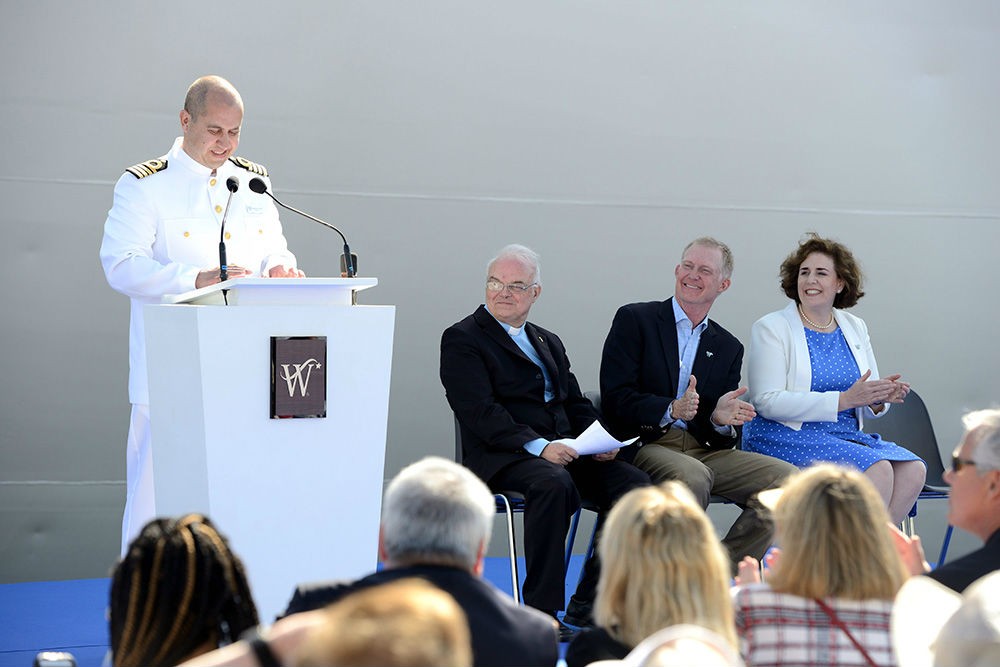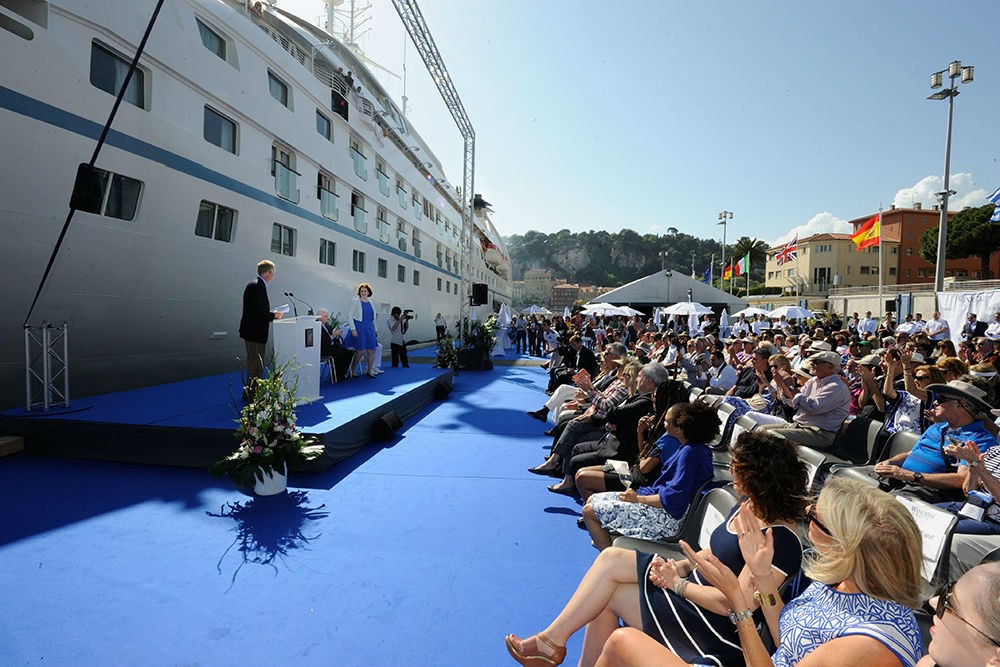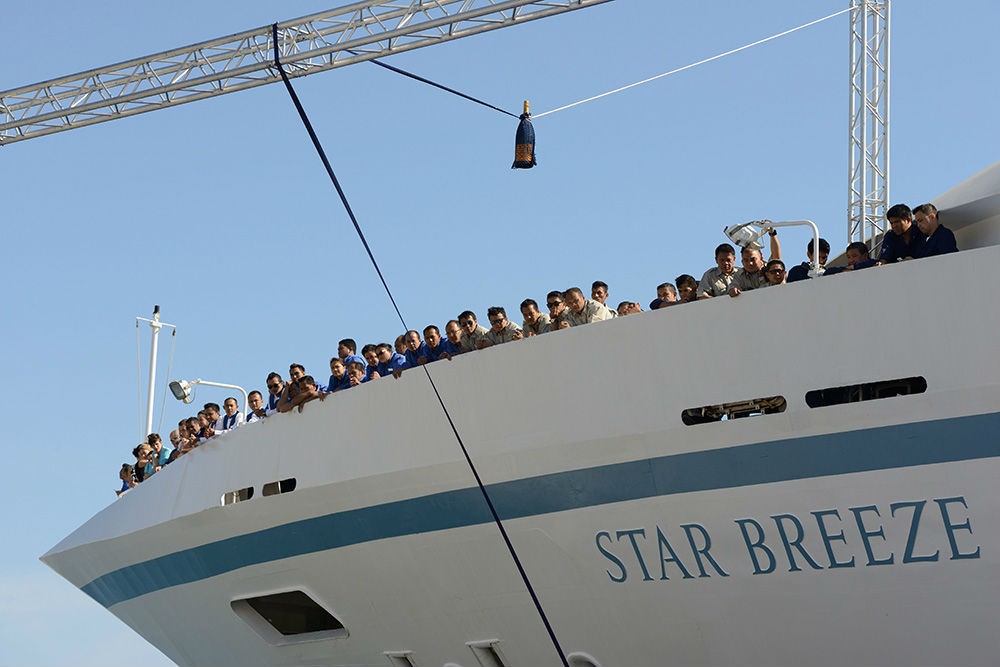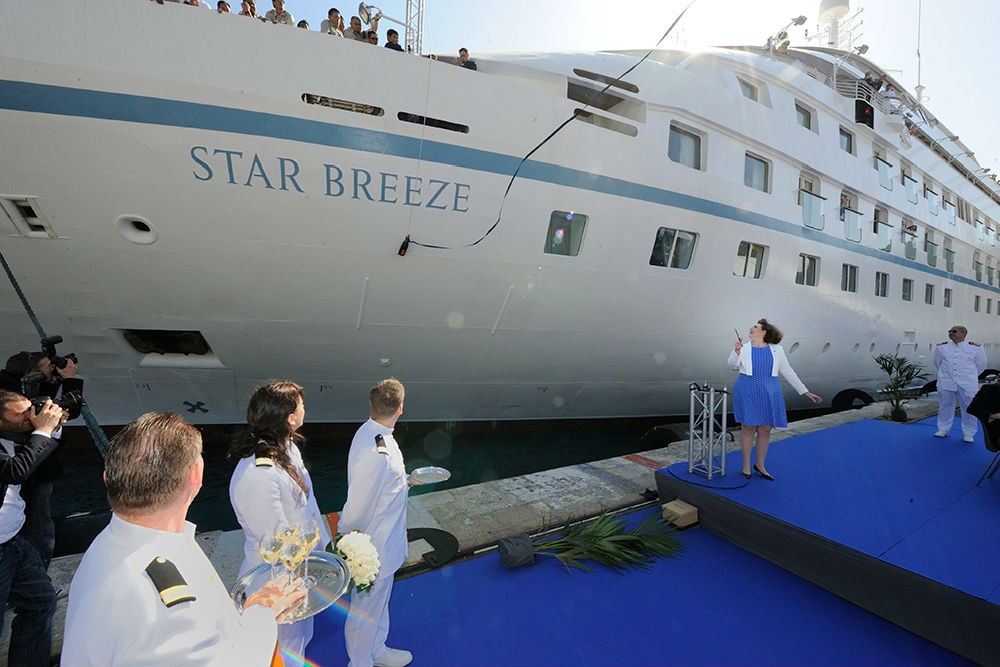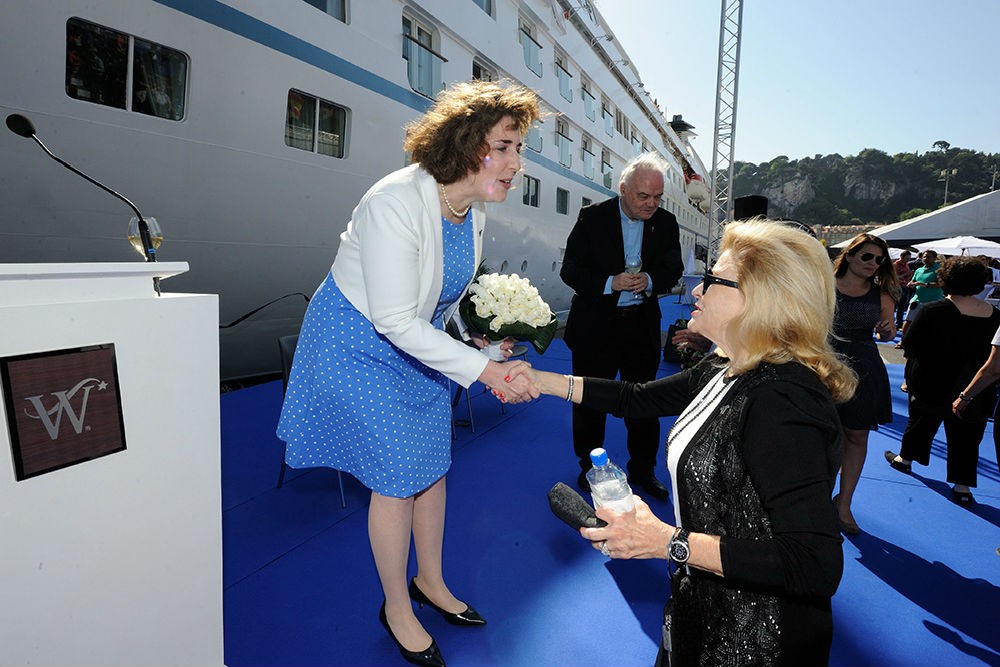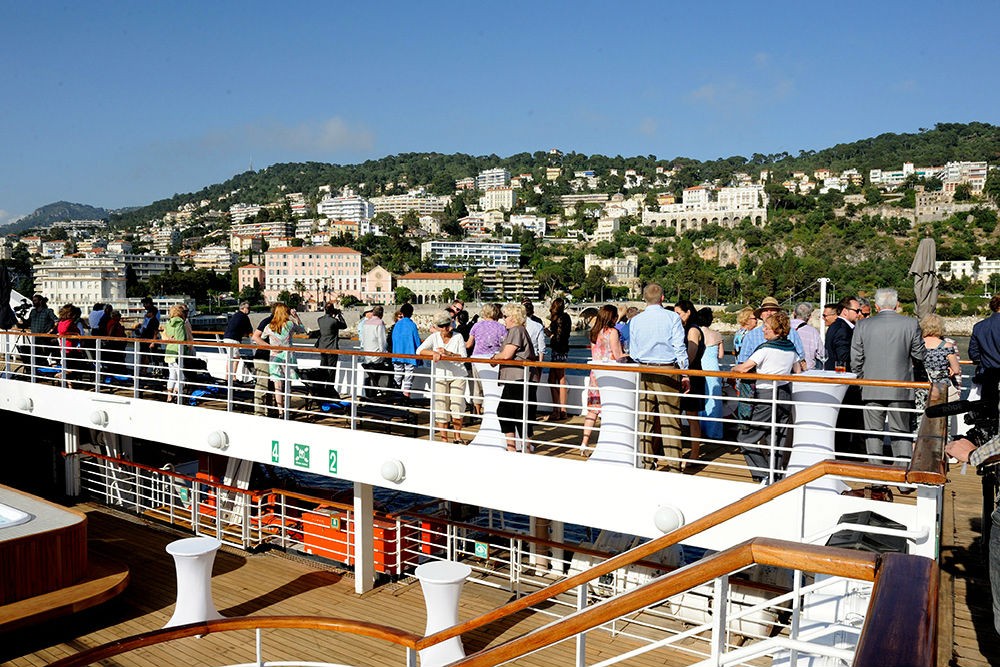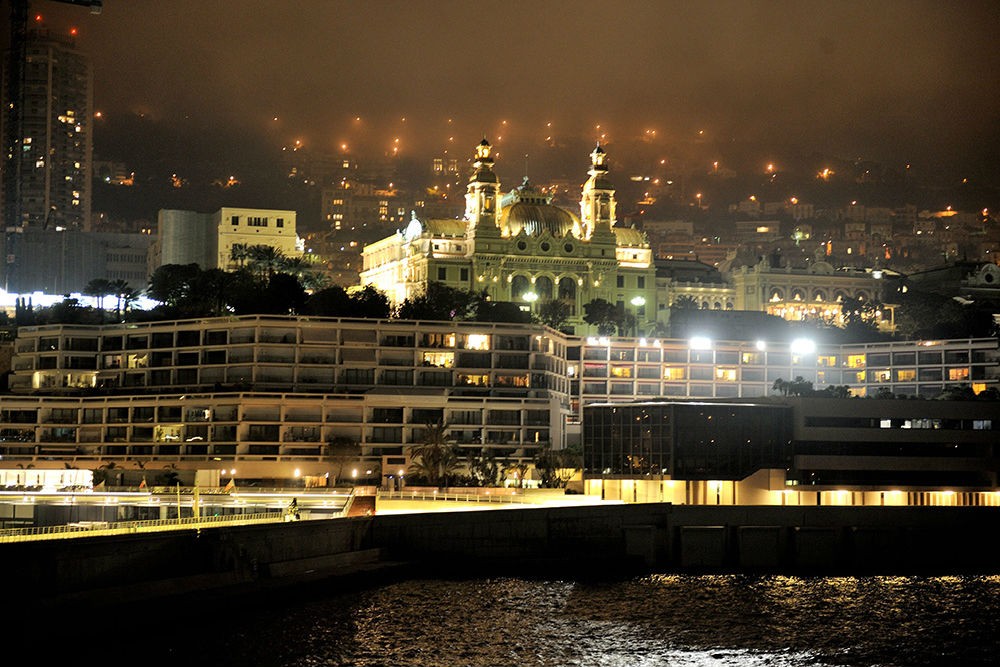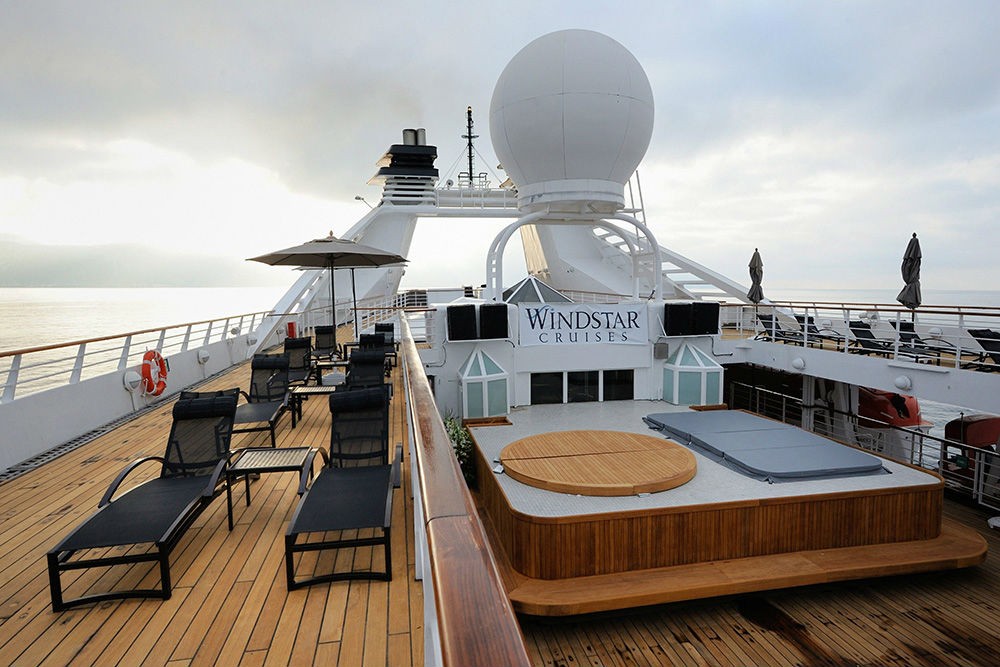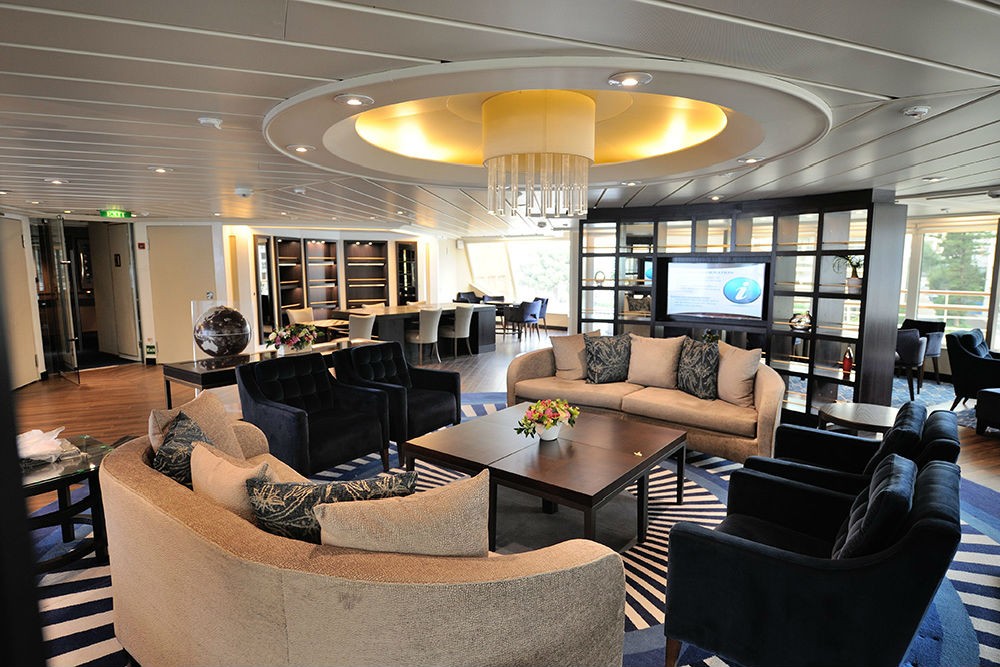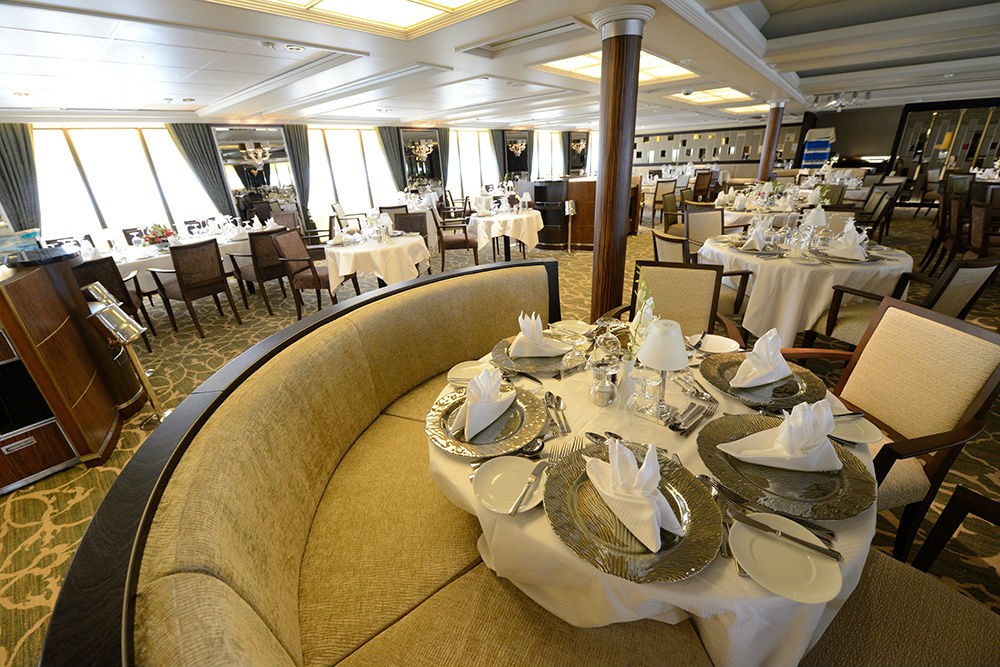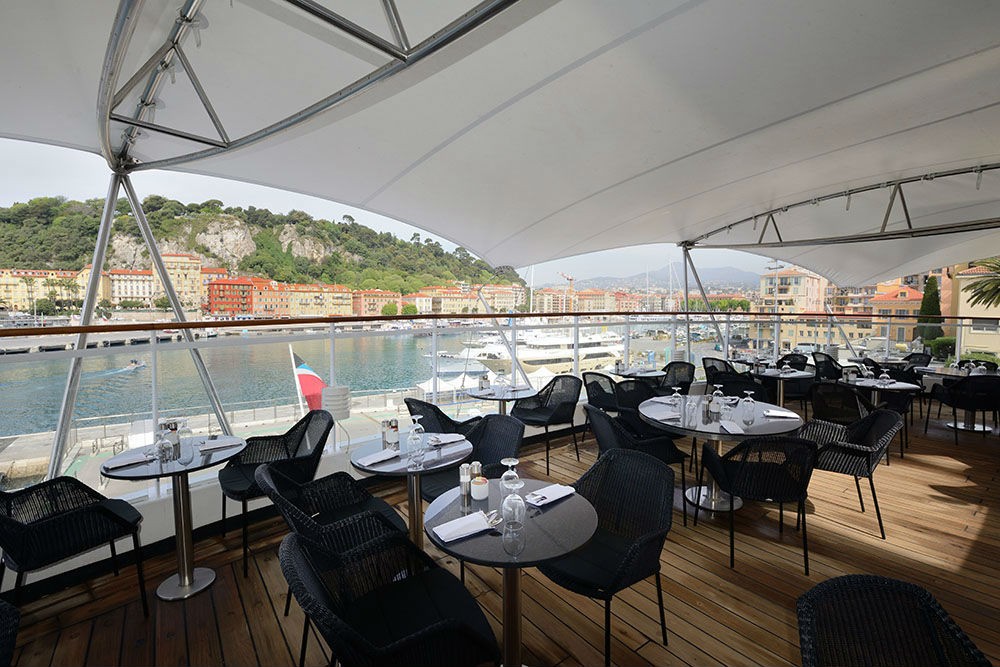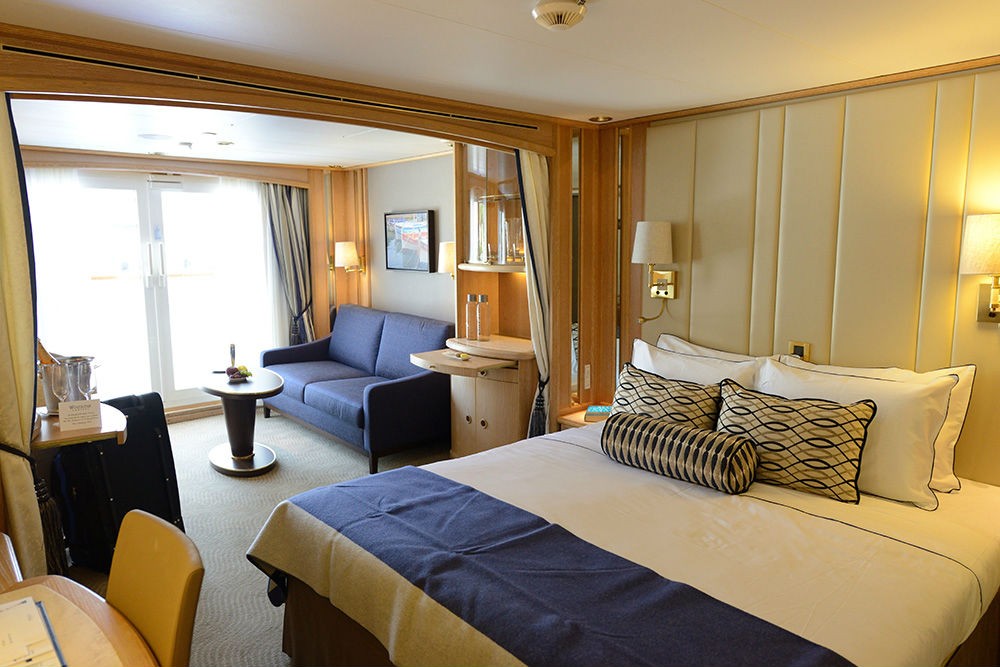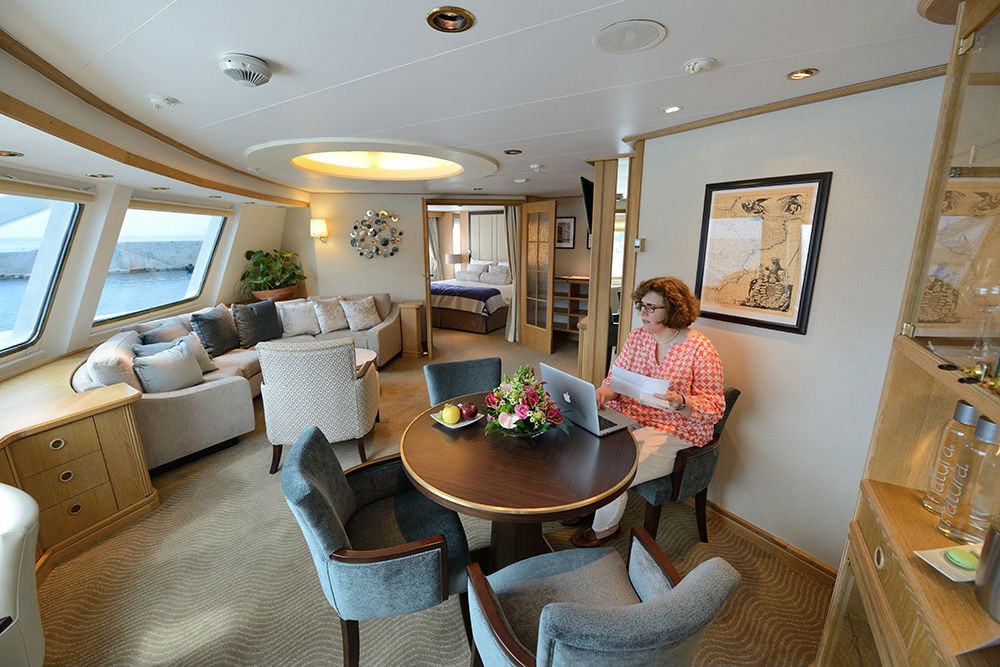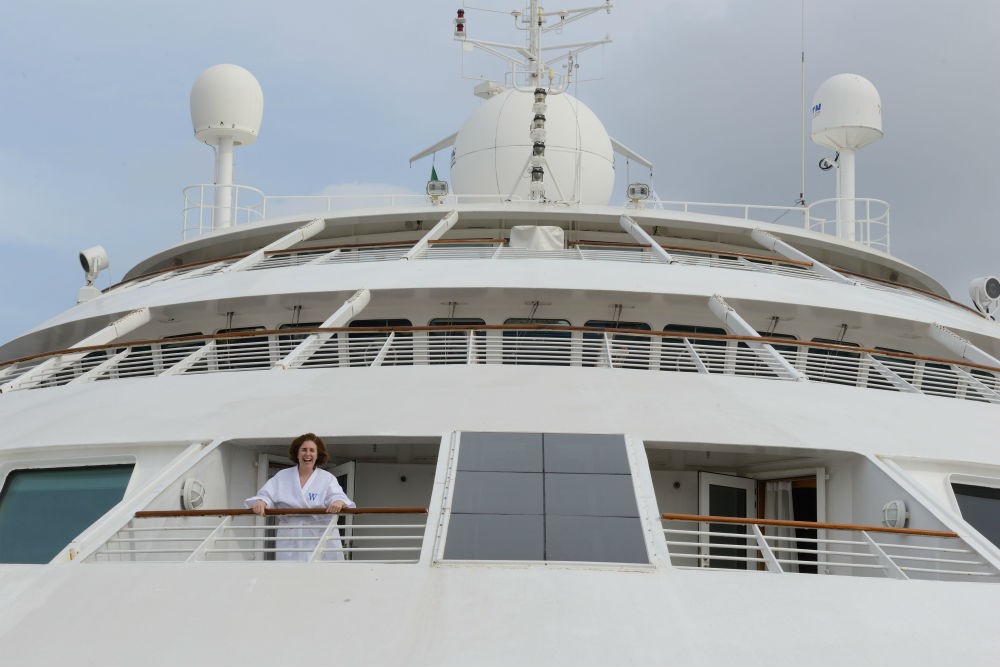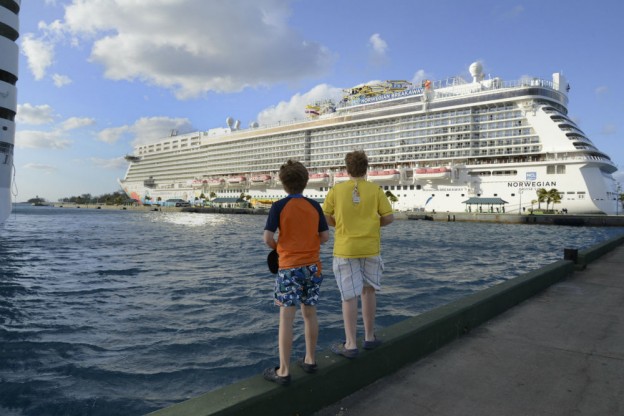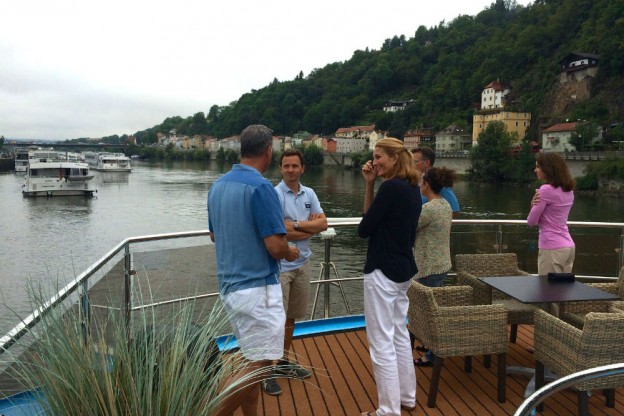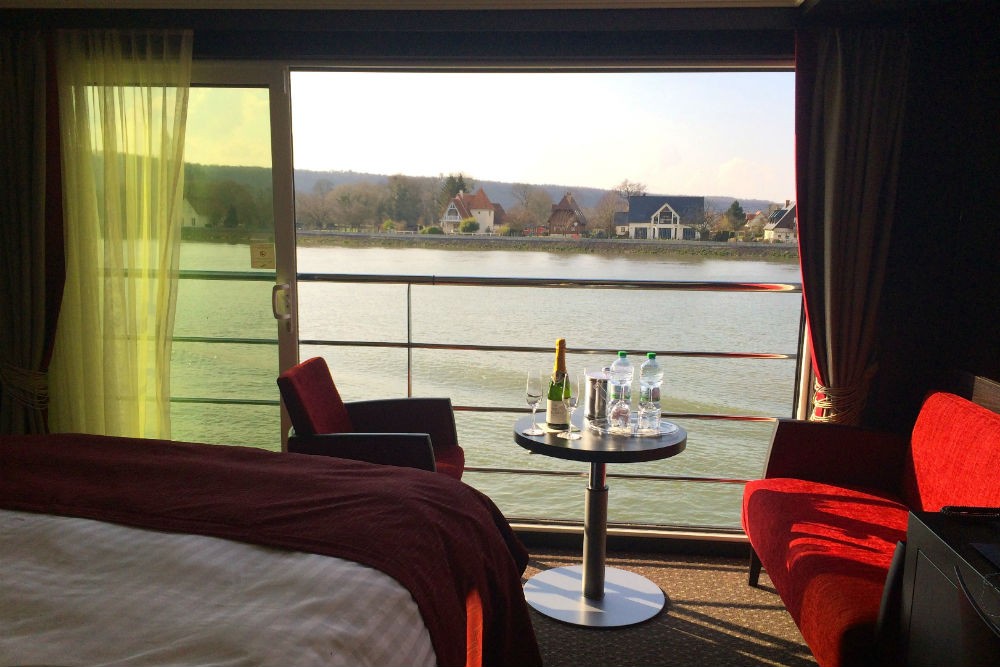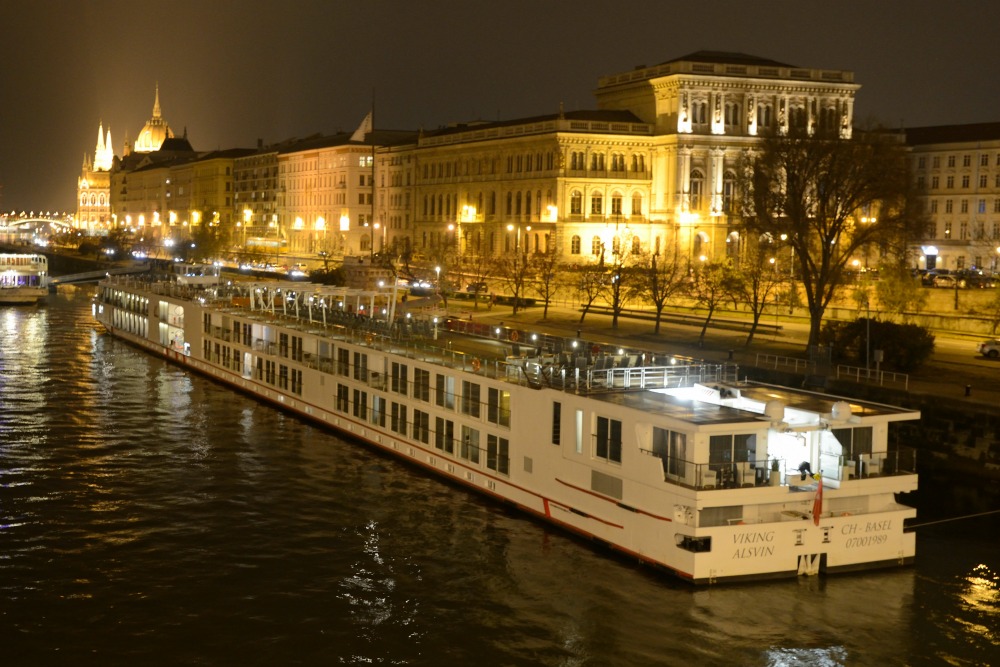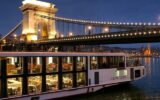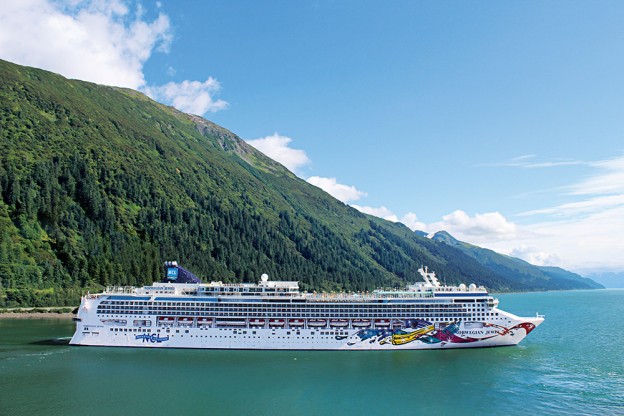If you think there’s no way you could survive a 6,000-passenger cruise ship, listen up. When the world’s new largest cruise ship, Harmony of the Seas, debuts this month, it will introduce a first in special treatment at sea: the Royal Genie. Yes, that’s right, a genie. The kind who grants your every wish. More specifically, a shipboard fixer whose goal is to expedite you past every line and make every potential obstacle on a 227,000-ton floating megaresort vanish.
At least, that was what my Royal Genie did when my family and I put one to the test a few months ago aboard Allure of the Seas. Allure was a fitting ship for this test run because it was the world’s largest cruise ship at the time (until Harmony of the Seas overtook it) and is very similar in design to Harmony. Royal Caribbean, the cruise line to whom these ships belong and that invited me to preview the Royal Genie service, plans to roll it out across five ships this month. Only a handful of passengers—those in the top suites—get a genie.
Now, testing a Royal Genie is harder than you might think. I had trouble dreaming up things for her to do. Maybe I’m just too low-maintenance for a genie. Or maybe I’m more comfortable fending for myself. I did that too on my cruise: I split my time between being spoiled rotten and tackling the buffet line like everyone else. My goal was to be able to advise you how to have the best trip possible aboard the world’s biggest cruise ship, whether you’re in a $30,000 suite or a genie-less $4,000 stateroom.
Before I share my hard-earned advice, though, allow me to clarify what a Royal Genie actually does.
What My Royal Genie Did
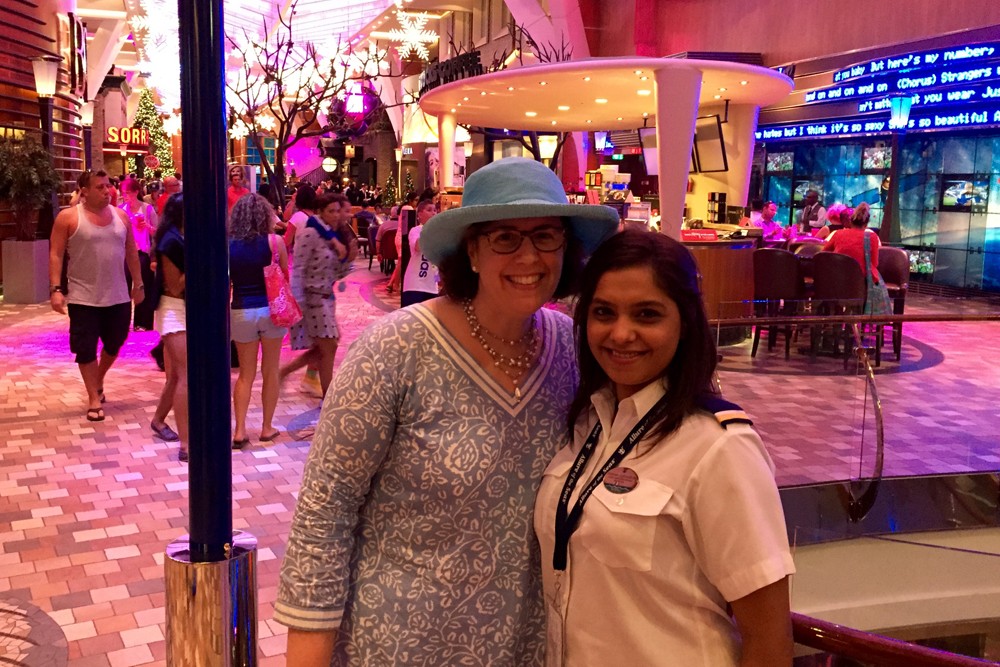
Me and my genie, Smitha Thompson, in the Royal Promenade aboard Allure of the Seas.
If you’ve ever had an airline rep meet you at an airport entrance and escort you through check-in and immigration and onto the plane, bypassing every line en route, then you can start to wrap your head around what a Royal Genie does for you. Her first order of business is to whisk you through the cruise check-in and embarkation process. My genie—the lovely Smitha Thompson, who hails from Mauritius—met me and my family inside the Fort Lauderdale cruise terminal. After we’d sailed through check-in, she escorted us onto the ship and to our room, where awaiting us was about a month’s supply of Brownie Brittle, pretzels, and red licorice (my kids’ favorite snacks, which our genie had researched beforehand). Refills flowed every day.
Smitha got us tables in the ship’s fully booked restaurants and front-row seats to the most popular shows. She had me meet with the head of the shore excursions department so I could get answers to my questions about the pros and cons of various shore tours on offer.
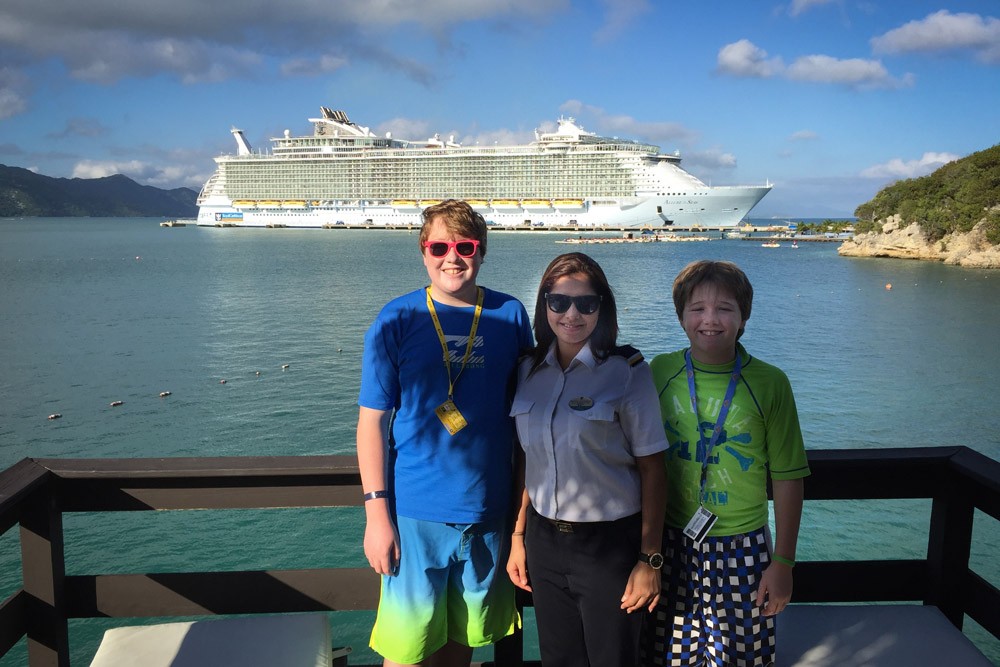
Smitha with the boys in our cabana in Labadee.
Her main goal, though, seemed to be for us never to get lost on the ship and never to wait in any line. To that end, she insisted on coming to our room (or to wherever we were on the ship) to escort us to every dinner, show, and scheduled activity. We assured her it was unnecessary, but this genie business was new to her too, and she didn’t want to mess up. Her goal in escorting us was always to take us on the shortest route from point A to point B and, upon arriving at point B, to hand us off to the person in charge there for safe keeping. When the ship docked in port, she expedited us off the ship via a labyrinth of secret passageways, normally off-limits to all but crew, so as to bypass any potential bottlenecks en route to the gangway. When we called at Labadee, the cruise line’s private port in Haiti, we were the first passengers off the ship, onto a private golf cart, into the roped-off portion of Labadee that is reserved for suite passengers, and up to a hilltop private cabana, where snorkel masks, fins, a cooler filled with drinks, and a bartender named Kesnel awaited.
Smitha even stood in line at the lobby Starbucks each morning so that she could knock on my door holding a skinny vanilla latte at 7:00 a.m. (She had asked me to specify a coffee drink and delivery time each morning.) The coffee was free of charge, of course, as were all of her services. Only Star Class passengers get a Royal Genie, and those passengers have already paid top dollar, so the cruise line is not about to nickel-and-dime them.
Smitha expedited our departure as well. Normally, on a cruise, passengers must place all suitcases and non-carry-on luggage outside their cabin doors the night before disembarkation (so that the luggage can be transported off the ship and into the cruise terminal). Smitha got this rule waived for us. On the final morning of the cruise, we got to stay in our cabin with all our luggage till everyone else had been ushered into disembarkation groups. Then she came with porters to collect us and our bags, led us on another shortcut to the gangway, escorted us off the ship, expedited us and our baggage through customs and immigration, placed us in a taxi, and sent us on our way. From cabin door to taxi door, disembarkation took 15 minutes—which, for the world’s biggest cruise ship in one of the world’s busiest cruise terminals, is pretty darned fast.
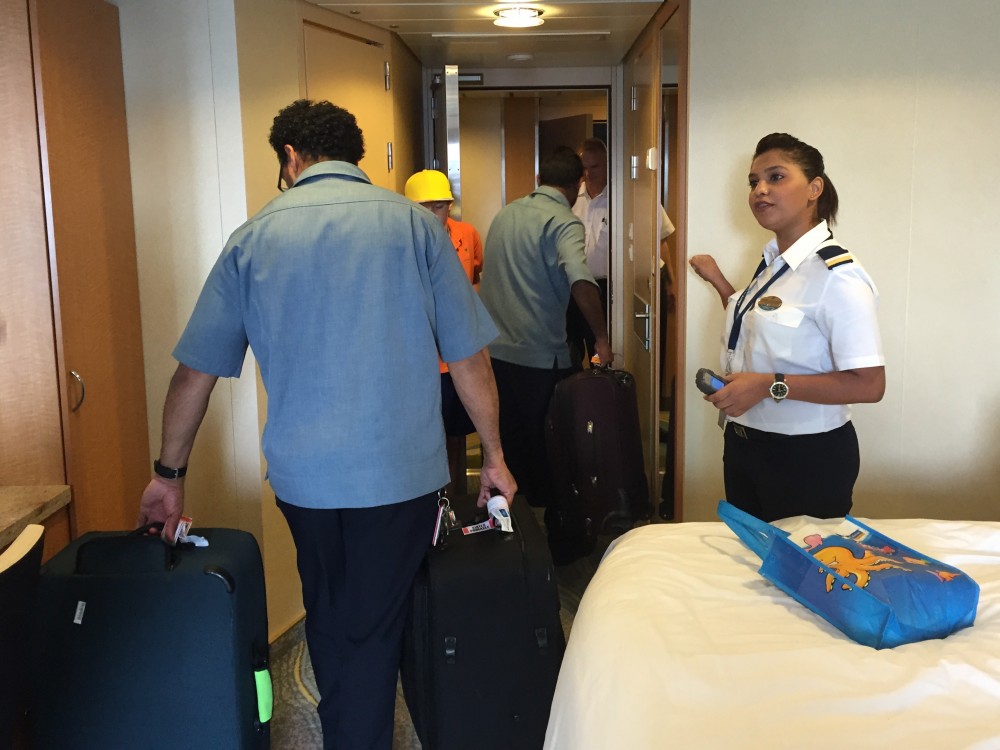
Thanks to Smitha, our luggage stayed with us in our cabin until we left the ship.
The Royal Genie concept has evolved in the months since my test run. Smitha, whose real job was in the ship’s guest services department, was enthusiastic about trying on the role but had never received any official genie training. Since that time, Royal Caribbean has hired a bevy of Royal Genies, trained and certified by the British Butler Institute, and has even designed special outfits for them that are less nautical, more purple.
How to Use a Royal Genie
As wonderful as having your own personal vacation assistant might sound, there were awkward moments and missed opportunities. Should you ever be so lucky as to have a Royal Genie at your disposal, here’s my advice:
Don’t be afraid to say No.
A Royal Genie wants so badly to be helpful that sometimes, so as not to hurt her feelings, you end up saying yes to things you really don’t want. For instance, I wish I’d said “No” when Smitha urged us to ride around Labadee in a private golf cart even though we would have preferred to walk like everyone else. I did say “No” to the hand-delivered morning lattes, once I realized I’d rather sleep in.
Ask which shipboard experiences are most special and why.
On a Royal Caribbean megaship, there are more activities, shows, and restaurants than anybody could ever try in one week, so you must choose carefully. I wish Smitha and I had sat down at the start and gone through the universe of options, as overwhelming as that might have been. Somehow I didn’t even learn until Day 6 that the ship has a zip-line or that I could dine al fresco in a garden, under the stars, listening to live music.
Request an in-depth tour of the ship on Day 2 or 3.
Smitha gave us a 45-minute introductory tour of the vessel on Day 1. The ship is the length of four football fields, with 18 decks, so she probably didn’t want to tire us out. But I wish I’d asked for an in-depth, three-hour tour. The ship has seven “neighborhoods” and surprises on every deck, from a Kate Spade boutique to a Boardwalk carousel to a running track that wraps around the entirety of the ship. Only on the last day of the cruise did I discover my favorite serene hideout: Deck 5 aft, where there are just a couple of empty wooden deck chairs and ocean panoramas forever.
Find out what behind-the-scenes tours are available.
Who are you most interested in meeting on the ship and what are you most interested in learning from him or her? The inner workings of a 6,000-passenger megaship are pretty fascinating. Your genie can probably arrange an insider’s tour with anyone from the chef to the chief engineer.
Ask about private photo ops with one of the ship’s photographers.
Your genie will likely schedule activities for you that are unique in the world. (Here, for example, is a glimpse of the first-at-sea features aboard Harmony of the Seas). And when you’re doing a one-of-a-kind activity with your family, you may want a photographer capturing the moment—such as when you’re riding the Labadee Flight Line or surfing on the Flow Rider.
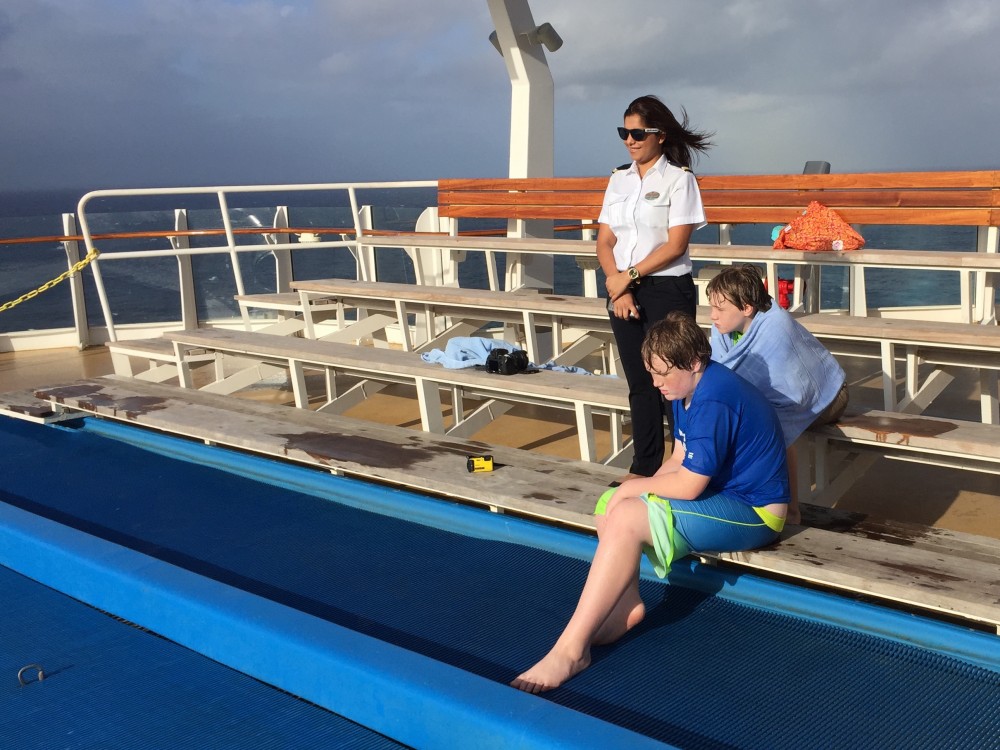
Smitha kept showing up to check on us around the ship. Here, she checks on the boys at the Flow Rider.
How to Get By Without a Royal Genie
The truth is, some of what a Royal Genie does you can arrange on your own, as long as you’re organized and do some advance planning.
Figure out what’s important to you ahead of time, so you board the ship with a strategy.
Study the cruise line’s website, read the forums and advice on Cruise Critic, and know the full range of options that will be available to you, so you can take action immediately upon boarding. On the ship each morning, read the list of scheduled activities in the daily newsletter; it’s a long, dense list, so bring a highlighter.
Book as much as possible before boarding.
You can make restaurant reservations and book show tickets online in advance. If it’s a free show, send a family member 30 minutes early to save seats for you.
Do the most important activities early in the cruise rather than later.
You know those one-of-a-kind activities I mentioned? On the last day of the cruise, passengers were realizing that they hadn’t tried the Flow Rider, or the Boardwalk zip-line, or what-have-you, and the result was that these things were in high demand. Try them early in the week when the line is short—or before they shut down because the weather has turned too windy.
If you’re in the Caribbean, consider staying on the ship during one of your days in port.
Nobody is a more enthusiastic shoreside sightseer than I. If you have a smart plan for exploring and getting an authentic experience of an island during your limited time in port, good for you. But if you’ve boarded with no plan, beware. The larger a ship, the longer it takes to get on and off, and the more touristy or inconvenient the port areas it calls at. If you’ve got no sightseeing plan, and your choice is between a generic group tour and walking aimlessly around tourist traps, consider just staying put on the ship and having all its features to yourself. Then return to the island and see it properly someday when you have the time to do it justice.
Ask the crew for dining recommendations.
Seriously. The crew members aboard Allure, at least, are outgoing conversationalists, and we got our best food tips from a random assortment of them. They recommended breakfast at the Park Café in Central Park (a big mid-ship outdoor garden), for instance; there we discovered New York deli-style bagels with assorted flavors of cream cheese, lox, and toppings. They also sent us to Johnny Rockets in the morning for omelettes. Who knew?
********************************************************************************
If you are considering a cruise on a giant ship, I recommend having a savvy and extremely well-connected cruise specialist arrange and book it for you so that you get the best cabin and itinerary for your dollar. Feel free to write to Ask Wendy and I can suggest the right cruise advisor for your particular trip goals.
Full Disclosure: Royal Caribbean provided me and my family with a complimentary cruise (I paid for the airfare). In keeping with my standard practice, there was no request for or expectation of coverage on Royal Caribbean’s part, nor was anything promised on mine.
Be a smarter traveler: Use Wendy’s WOW List to plan your next trip. You can also follow her on Facebook and Twitter @wendyperrin, and sign up for her weekly newsletter to stay in the know.

